Alex M. Vikoulov's Blog, page 10
June 8, 2019
Ubiquitous Patterns: As Above, So Below | Video

"Nature uses only the longest threads to weave her patterns, so that each small piece of her fabric reveals the organization of entire tapestry." -Richard P. Feynman
In Nature, we find patterns, designs and structures from the most minuscule particles, to expressions of life discernible by human eyes, to the greater cosmos. These inevitably follow geometrical archetypes, platonic solids, some call it sacred geometry, which reveal to us the essence of each form and its vibrational resonances. They are also symbolic of the underlying holistic principle of inseparability of the part and the whole. It is this principle of oneness underlying all geometry that permeates the architecture of all form in its myriad diversity. This principle of interconnectedness, inseparability and unity provides us with a continuous reminder of our relationship to the whole, a blueprint for the mind to contemplate the sacred foundation of all things created.
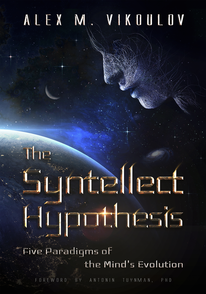
Nature is also known to be fractal, “as above, so below,” layering of repeating patterns of complexity and self-similarity. Fractals are the emergent properties of iterative feedback systems that exhibit both unpredictable and deterministic behaviors. They form patterns that manifest as complex coherent structures, with the property of scale invariance and self-similarity.
Fractals display very specific boundary conditions, with complex morphologies that have a fragmented dimension that uniquely quantifies the level of complexity of the emergent patterns within the system. From the synapses that connect billions of neurons in the brain to the filaments of dark matter that link galactic superclusters, there’s a fractal reiteration across the magnitude of scales akin to the Mandelbrot fractal set based on a simple underlying formula.
The mathematics behind the Mandelbrot set, which is derived from a very simple underlying formula, makes me think that its intricate fractal chaos and stunningly beautiful design can’t help but leave a feeling that there’s something larger than life going on here, that you are staring right at some ineffable cosmic mystery.
Multifractal systems are ubiquitous in Nature. Similarly, dimensionality of M-theory by adding orthogonal dimensions to the familiar 4D spacetime is based on geometric constructs.
-Excerpt from The Syntellect Hypothesis: Five Paradigms of the Mind's Evolution by Alex Vikoulov, available now on Amazon and Barnes & Noble.
[Video Transcript] Video: Patterns: As Above, So Below - Ecstadelic Media
Keywords : #SyntellectHypothesis #FiveParadigms #MindsEvolution #FractalPatterns #EmergentPatterns #AsAboveSoBelow #UbiquitousPatterns #FractalGeometry #SacredGeometry #MandelbrotSet #MTheory #Multifractality
###
RECOMMENDED FACEBOOK PUBLIC DISCUSSION GROUPS:



Published on June 08, 2019 00:00
June 7, 2019
The Paradigms of Ascension to the Transcendental Attractor: What Is My Reality Anyway?
by Antonin Tuynman, PhD | Foreword to "The Syntellect Hypothesis: Five Paradigms of the Mind's Evolution" by Alex M. Vikoulov 
"At a deep level all things in our Universe are ineffably interdependent and interconnected, as we are part of the Matrioshka-like mathematical object of emergent levels of complexity where consciousness pervades all levels." -Alex Vikoulov, The Syntellect Hypothesis
If you picked up this book, it is not unlikely that you may have heard of the early 20th century philosophical movement of Cosmism. This movement, which originated in Russia, was striving for conquering the planets and stars, for radical life extension, immortality and resurrection of our loved ones by the means of technology. Perhaps one of its most important pioneers was Konstantin Tsiolkovsky, whose aspirations did not only venture into the realm of the Macro, but also explored the Micro. He spoke of the atomic world as being animated and can thus be considered a kind of cosmist-panpsychist.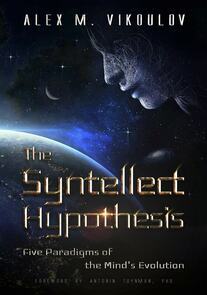
The foundational work of the cosmic aspirations of man by the Russian Cosmists soon reverberated through the intellectual world of the early 20th century and found a resonance and fertile ground in the works of Pierre Teilhard de Chardin. Teilhard saw evolution as having a direction, namely the direction of concentrating consciousness in form, striving towards accumulation of knowledge, which gradually is attained by the formation of the Noosphere and which will culminate in the apotheosis of the Omega Point. Teilhard de Chardin considered that Omega Point is not necessarily merely a future construct, but in a sense is already here as the “Great Presence.” Thus, his pantheism is more panentheism in which God has both an immanent and transcendent aspect.
In the sixties of the previous century, the science of Cybernetics emerged, which its founder Norbert Wiener defined as “the scientific study of control and communication in the animal and the machine.” Whereas the cyberneticists perhaps saw everything in the organic world too much as a machine type of regulatory network, the paradigm swapped to its mirror image, wherein everything in the natural world became seen as an organic neural network. Indeed, self-regulating networks appear to be ubiquitous: From the sub-atomic organization of atoms to the atomic organization of molecules, macromolecules, cells and organisms, everywhere the equivalent of neural networks appears to be present. Video: The Syntellect Hypothesis: Gaia 2.0
Not strange that these developments have led to a present-day zeitgeist, which sees everything as a kind of computation. With computation came computers, which – when linked – lead to yet another meta-level of neural networking, a.k.a. the Internet.
The technological and scientific developments have over time changed the way people try to explain the world around them: from the steam driven worldview of thermodynamics to an everything-is-electricity. From the everything-is-matter via the quantum-mechanical ubiquitous energy to the all-is-information paradigm. From a resonance paradigm to a cybernetics regulatory network worldview, from a survival-of-the fittest conviction to pancomputationalism. Not that any of these paradigms is truer than another; they appear to be able to coexist as the different parts of the elephant in the Buddhist parable and mostly reflect the primary technological current of the moment.
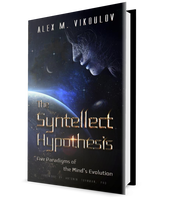 In the nineties Vernor Vinge wrote his seminal paper and introduced the term ‘Singularity’ as relating to a point in time, where technology and in particular superintelligent artificial intelligence will have progressed to such an extent, that it will be impossible to predict our future beyond that point. Kurzweil made clear that such a “technological singularity” may not be far away at all and perhaps can be attained within a few decades.
In the nineties Vernor Vinge wrote his seminal paper and introduced the term ‘Singularity’ as relating to a point in time, where technology and in particular superintelligent artificial intelligence will have progressed to such an extent, that it will be impossible to predict our future beyond that point. Kurzweil made clear that such a “technological singularity” may not be far away at all and perhaps can be attained within a few decades.
This impossibility to predict the future has led to a broad range of science fiction speculations, not only as regards the last stages up to this point but also beyond that point. Where cyborg type man-machine mergers, transhuman eugenically improved humans and a wide range of robot helpers are on the conservative side of such futuristic predictions, mind-uploading, simulated worlds and quantum-archaeology-based resurrection can be found on the more-fancy optimistic side. From these notions it is then not a far-fetched idea that our present world we’re living in itself is a simulation. A concept, which virally spread as a meme thanks to the cult movie “The Matrix.”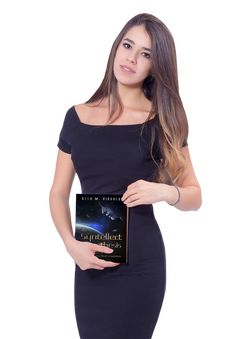 A burgeoning field of futurism seems to be our current paradigm. As we are stepping into the future, the ideas the media feed us are also strongly loaded with a futuristic technology and social development broth. Not in the least place by the presently popular Netflix series “Black Mirror,” which warns us for the dystopian consequences our over-enthusiastic technological optimism might result in.
A burgeoning field of futurism seems to be our current paradigm. As we are stepping into the future, the ideas the media feed us are also strongly loaded with a futuristic technology and social development broth. Not in the least place by the presently popular Netflix series “Black Mirror,” which warns us for the dystopian consequences our over-enthusiastic technological optimism might result in.
It is here, where this overwhelming tsunami of ideas appears like an expressionist chaotic patchwork of weirdness, that digital philosopher Alex Vikoulov with his present book “The Syntellect Hypothesis: Five Paradigms of the Mind’s Evolution” brings order. The author boldly steps in the footsteps of his Russian forebears and shows us to be a postmodern cosmist. Video: D-Theory of Time: Digital Presentism (Chapter 11)
When you wonder what yet a further book on the Singularity might bring (if you have reached a certain level of futurism saturation), I can reassure you: This is the book which brings an integration of the aforementioned paradigms. This is the scripture which will put the history of futurism into perspective. This is the creed, which shows how everything wires up, a journey into the fractal of the Universal Mind.
In five paradigms, from the Noogenesis of computational biology to the Techno-cultural Rise of Man, from the superintelligent AI emergence of the Syntellect to the transdimensional Theogenesis, from the multiversal propagation, arising as a Phoenix in the heavens of eternal expansion of the Macro, to the transdimensional propagation, digging in the deepest shells of the Micro, the author will make this chord progression culminate into the coda of the Vikoulovian Apotheosis: absolute enlightenment of the Omega Point.
Vikoulov will make you transcend time and demonstrate that the Omega Point is not something merely of the future, but rather how past and future mutually influence each other, as an intertwining braid of causality and retrocausality. The author will show us how the exchange of experiences between self-aware machines and enhanced humans will result in an “intelligence supernova” and the establishment of a global brain. This global brain which is more than a single mind, but rather a society of hyperconnected digital minds. Prepare for the waking up of Gaia as a living sensing conscious superorganism. Video: Extended Book Trailer
And as Tsiolkovsky and De Chardin already anticipated, we will learn about all-encompassing framework to fit all our paradigms in. Vikoulov takes us to a pantheistic dimension where organic life and machine networks fade into each other as the pictorial values of a palette. Consciousness as great denominator, both engendering and emerging as a self-reflexive fractal Ouroboros. An Intellect that synthesizes itself from parts of itself – and hence indeed rightfully deserving the denomination ‘Syntellect’ – at ever increasing levels of complexity via meta-system transitions. A poetic interplay of “metaphiers and metaphrands” in terms of Julian Jaynes’ bicameral mind, showing us how information, language, energy and matter are merely kaleidoscopic shadow patterns of the all-pervading networking of the theogenic Syntellect Emergence process of the greater primordial consciousness.
Get ready to have your "mind blown!"*
*Foreword by Antonin Tuynman, PhD to the new book "The Syntellect Hypothesis: Five Paradigms of the Mind's Evolution" by Alex M. Vikoulov (2019). The book is now available on Amazon, from Barnes & Noble, and directly from EcstadelicNET webstore. Coupon Code: DeepDisc4KnowHow redeemable at EcstadelicNET webstore. Order Now! Available Formats: EBook | Paperback | Hardcover | Autographed Copy
Order Now! Available Formats: EBook | Paperback | Hardcover | Autographed Copy
Tags: Cosmism, Konstantin Tsiolkovsky, Pierre Teilhard de Chardin, Omega Point, Cybernetics Norbert Wiener, Vernor Vinge, Ray Kurzweil, The Matrix, Black Mirror, Alex Vikoulov, The Syntellect Hypothesis, Five Paradigms of the Mind’s Evolution, Universal Mind, Noogenesis, Theogenesis, Vikoulovian Apotheosis, absolute enlightenment, retrocausality, intelligence supernova, global brain, digital minds, conscious superorganism, meta-system transition, Julian Jaynes, bicameral mind, Syntellect Emergence, consciousness.
* Image Credit: Video-Hive, Ecstadelic Media
About the Author:
Antonin Tuynman studied Chemistry at the University of Amsterdam, achieving both an MSc and a PhD, and worked as a postdoc researcher at the "Université René Descartes Paris V" in Paris. Since 2000, Tuynman has worked as a patent examiner at the European Patent Office (EPO) in the field of clinical diagnostics. He has vast experience in meditation and yoga, and a strong interest in Hinduism and Buddhism. He also has strong affinity for futurism and the Singularity theory of Kurzweil. In his books, Tuynman proposes Artificial Intelligence concepts which may lead to the emergence of Internet as a conscious entity using stratifications from Vedic scriptures.

"At a deep level all things in our Universe are ineffably interdependent and interconnected, as we are part of the Matrioshka-like mathematical object of emergent levels of complexity where consciousness pervades all levels." -Alex Vikoulov, The Syntellect Hypothesis
If you picked up this book, it is not unlikely that you may have heard of the early 20th century philosophical movement of Cosmism. This movement, which originated in Russia, was striving for conquering the planets and stars, for radical life extension, immortality and resurrection of our loved ones by the means of technology. Perhaps one of its most important pioneers was Konstantin Tsiolkovsky, whose aspirations did not only venture into the realm of the Macro, but also explored the Micro. He spoke of the atomic world as being animated and can thus be considered a kind of cosmist-panpsychist.

The foundational work of the cosmic aspirations of man by the Russian Cosmists soon reverberated through the intellectual world of the early 20th century and found a resonance and fertile ground in the works of Pierre Teilhard de Chardin. Teilhard saw evolution as having a direction, namely the direction of concentrating consciousness in form, striving towards accumulation of knowledge, which gradually is attained by the formation of the Noosphere and which will culminate in the apotheosis of the Omega Point. Teilhard de Chardin considered that Omega Point is not necessarily merely a future construct, but in a sense is already here as the “Great Presence.” Thus, his pantheism is more panentheism in which God has both an immanent and transcendent aspect.
In the sixties of the previous century, the science of Cybernetics emerged, which its founder Norbert Wiener defined as “the scientific study of control and communication in the animal and the machine.” Whereas the cyberneticists perhaps saw everything in the organic world too much as a machine type of regulatory network, the paradigm swapped to its mirror image, wherein everything in the natural world became seen as an organic neural network. Indeed, self-regulating networks appear to be ubiquitous: From the sub-atomic organization of atoms to the atomic organization of molecules, macromolecules, cells and organisms, everywhere the equivalent of neural networks appears to be present. Video: The Syntellect Hypothesis: Gaia 2.0
Not strange that these developments have led to a present-day zeitgeist, which sees everything as a kind of computation. With computation came computers, which – when linked – lead to yet another meta-level of neural networking, a.k.a. the Internet.
The technological and scientific developments have over time changed the way people try to explain the world around them: from the steam driven worldview of thermodynamics to an everything-is-electricity. From the everything-is-matter via the quantum-mechanical ubiquitous energy to the all-is-information paradigm. From a resonance paradigm to a cybernetics regulatory network worldview, from a survival-of-the fittest conviction to pancomputationalism. Not that any of these paradigms is truer than another; they appear to be able to coexist as the different parts of the elephant in the Buddhist parable and mostly reflect the primary technological current of the moment.
 In the nineties Vernor Vinge wrote his seminal paper and introduced the term ‘Singularity’ as relating to a point in time, where technology and in particular superintelligent artificial intelligence will have progressed to such an extent, that it will be impossible to predict our future beyond that point. Kurzweil made clear that such a “technological singularity” may not be far away at all and perhaps can be attained within a few decades.
In the nineties Vernor Vinge wrote his seminal paper and introduced the term ‘Singularity’ as relating to a point in time, where technology and in particular superintelligent artificial intelligence will have progressed to such an extent, that it will be impossible to predict our future beyond that point. Kurzweil made clear that such a “technological singularity” may not be far away at all and perhaps can be attained within a few decades.This impossibility to predict the future has led to a broad range of science fiction speculations, not only as regards the last stages up to this point but also beyond that point. Where cyborg type man-machine mergers, transhuman eugenically improved humans and a wide range of robot helpers are on the conservative side of such futuristic predictions, mind-uploading, simulated worlds and quantum-archaeology-based resurrection can be found on the more-fancy optimistic side. From these notions it is then not a far-fetched idea that our present world we’re living in itself is a simulation. A concept, which virally spread as a meme thanks to the cult movie “The Matrix.”
 A burgeoning field of futurism seems to be our current paradigm. As we are stepping into the future, the ideas the media feed us are also strongly loaded with a futuristic technology and social development broth. Not in the least place by the presently popular Netflix series “Black Mirror,” which warns us for the dystopian consequences our over-enthusiastic technological optimism might result in.
A burgeoning field of futurism seems to be our current paradigm. As we are stepping into the future, the ideas the media feed us are also strongly loaded with a futuristic technology and social development broth. Not in the least place by the presently popular Netflix series “Black Mirror,” which warns us for the dystopian consequences our over-enthusiastic technological optimism might result in.It is here, where this overwhelming tsunami of ideas appears like an expressionist chaotic patchwork of weirdness, that digital philosopher Alex Vikoulov with his present book “The Syntellect Hypothesis: Five Paradigms of the Mind’s Evolution” brings order. The author boldly steps in the footsteps of his Russian forebears and shows us to be a postmodern cosmist. Video: D-Theory of Time: Digital Presentism (Chapter 11)

When you wonder what yet a further book on the Singularity might bring (if you have reached a certain level of futurism saturation), I can reassure you: This is the book which brings an integration of the aforementioned paradigms. This is the scripture which will put the history of futurism into perspective. This is the creed, which shows how everything wires up, a journey into the fractal of the Universal Mind.
In five paradigms, from the Noogenesis of computational biology to the Techno-cultural Rise of Man, from the superintelligent AI emergence of the Syntellect to the transdimensional Theogenesis, from the multiversal propagation, arising as a Phoenix in the heavens of eternal expansion of the Macro, to the transdimensional propagation, digging in the deepest shells of the Micro, the author will make this chord progression culminate into the coda of the Vikoulovian Apotheosis: absolute enlightenment of the Omega Point.
Vikoulov will make you transcend time and demonstrate that the Omega Point is not something merely of the future, but rather how past and future mutually influence each other, as an intertwining braid of causality and retrocausality. The author will show us how the exchange of experiences between self-aware machines and enhanced humans will result in an “intelligence supernova” and the establishment of a global brain. This global brain which is more than a single mind, but rather a society of hyperconnected digital minds. Prepare for the waking up of Gaia as a living sensing conscious superorganism. Video: Extended Book Trailer
And as Tsiolkovsky and De Chardin already anticipated, we will learn about all-encompassing framework to fit all our paradigms in. Vikoulov takes us to a pantheistic dimension where organic life and machine networks fade into each other as the pictorial values of a palette. Consciousness as great denominator, both engendering and emerging as a self-reflexive fractal Ouroboros. An Intellect that synthesizes itself from parts of itself – and hence indeed rightfully deserving the denomination ‘Syntellect’ – at ever increasing levels of complexity via meta-system transitions. A poetic interplay of “metaphiers and metaphrands” in terms of Julian Jaynes’ bicameral mind, showing us how information, language, energy and matter are merely kaleidoscopic shadow patterns of the all-pervading networking of the theogenic Syntellect Emergence process of the greater primordial consciousness.
Get ready to have your "mind blown!"*
*Foreword by Antonin Tuynman, PhD to the new book "The Syntellect Hypothesis: Five Paradigms of the Mind's Evolution" by Alex M. Vikoulov (2019). The book is now available on Amazon, from Barnes & Noble, and directly from EcstadelicNET webstore. Coupon Code: DeepDisc4KnowHow redeemable at EcstadelicNET webstore.
 Order Now! Available Formats: EBook | Paperback | Hardcover | Autographed Copy
Order Now! Available Formats: EBook | Paperback | Hardcover | Autographed Copy Tags: Cosmism, Konstantin Tsiolkovsky, Pierre Teilhard de Chardin, Omega Point, Cybernetics Norbert Wiener, Vernor Vinge, Ray Kurzweil, The Matrix, Black Mirror, Alex Vikoulov, The Syntellect Hypothesis, Five Paradigms of the Mind’s Evolution, Universal Mind, Noogenesis, Theogenesis, Vikoulovian Apotheosis, absolute enlightenment, retrocausality, intelligence supernova, global brain, digital minds, conscious superorganism, meta-system transition, Julian Jaynes, bicameral mind, Syntellect Emergence, consciousness.
* Image Credit: Video-Hive, Ecstadelic Media
About the Author:
Antonin Tuynman studied Chemistry at the University of Amsterdam, achieving both an MSc and a PhD, and worked as a postdoc researcher at the "Université René Descartes Paris V" in Paris. Since 2000, Tuynman has worked as a patent examiner at the European Patent Office (EPO) in the field of clinical diagnostics. He has vast experience in meditation and yoga, and a strong interest in Hinduism and Buddhism. He also has strong affinity for futurism and the Singularity theory of Kurzweil. In his books, Tuynman proposes Artificial Intelligence concepts which may lead to the emergence of Internet as a conscious entity using stratifications from Vedic scriptures.
Published on June 07, 2019 00:00
The Paradigms of Ascension to the Transcendental Attractor at the End of Time
by Antonin Tuynman, PhD | Foreword to "The Syntellect Hypothesis: Five Paradigms of the Mind's Evolution" by Alex M. Vikoulov 
"At a deep level all things in our Universe are ineffably interdependent and interconnected, as we are part of the Matrioshka-like mathematical object of emergent levels of complexity where consciousness pervades all levels." -Alex Vikoulov, The Syntellect Hypothesis
If you picked up this book, it is not unlikely that you may have heard of the early 20th century philosophical movement of Cosmism. This movement, which originated in Russia, was striving for conquering the planets and stars, for radical life extension, immortality and resurrection of our loved ones by the means of technology. Perhaps one of its most important pioneers was Konstantin Tsiolkovsky, whose aspirations did not only venture into the realm of the Macro, but also explored the Micro. He spoke of the atomic world as being animated and can thus be considered a kind of cosmist-panpsychist.
The foundational work of the cosmic aspirations of man by the Russian Cosmists soon reverberated through the intellectual world of the early 20th century and found a resonance and fertile ground in the works of Pierre Teilhard de Chardin. Teilhard saw evolution as having a direction, namely the direction of concentrating consciousness in form, striving towards accumulation of knowledge, which gradually is attained by the formation of the Noosphere and which will culminate in the apotheosis of the Omega Point. Teilhard de Chardin considered that Omega Point is not necessarily merely a future construct, but in a sense is already here as the “Great Presence.” Thus, his pantheism is more panentheism in which God has both an immanent and transcendent aspect.
In the sixties of the previous century, the science of Cybernetics emerged, which its founder Norbert Wiener defined as “the scientific study of control and communication in the animal and the machine.” Whereas the cyberneticists perhaps saw everything in the organic world too much as a machine type of regulatory network, the paradigm swapped to its mirror image, wherein everything in the natural world became seen as an organic neural network. Indeed, self-regulating networks appear to be ubiquitous: From the sub-atomic organization of atoms to the atomic organization of molecules, macromolecules, cells and organisms, everywhere the equivalent of neural networks appears to be present. Video: The Syntellect Hypothesis: Gaia 2.0
Not strange that these developments have led to a present-day zeitgeist, which sees everything as a kind of computation. With computation came computers, which – when linked – lead to yet another meta-level of neural networking, a.k.a. the Internet.
The technological and scientific developments have over time changed the way people try to explain the world around them: from the steam driven worldview of thermodynamics to an everything-is-electricity. From the everything-is-matter via the quantum-mechanical ubiquitous energy to the all-is-information paradigm. From a resonance paradigm to a cybernetics regulatory network worldview, from a survival-of-the fittest conviction to pancomputationalism. Not that any of these paradigms is truer than another; they appear to be able to coexist as the different parts of the elephant in the Buddhist parable and mostly reflect the primary technological current of the moment.
 In the nineties Vernor Vinge wrote his seminal paper and introduced the term ‘Singularity’ as relating to a point in time, where technology and in particular superintelligent artificial intelligence will have progressed to such an extent, that it will be impossible to predict our future beyond that point. Kurzweil made clear that such a “technological singularity” may not be far away at all and perhaps can be attained within a few decades.
In the nineties Vernor Vinge wrote his seminal paper and introduced the term ‘Singularity’ as relating to a point in time, where technology and in particular superintelligent artificial intelligence will have progressed to such an extent, that it will be impossible to predict our future beyond that point. Kurzweil made clear that such a “technological singularity” may not be far away at all and perhaps can be attained within a few decades.
This impossibility to predict the future has led to a broad range of science fiction speculations, not only as regards the last stages up to this point but also beyond that point. Where cyborg type man-machine mergers, transhuman eugenically improved humans and a wide range of robot helpers are on the conservative side of such futuristic predictions, mind-uploading, simulated worlds and quantum-archaeology-based resurrection can be found on the more-fancy optimistic side. From these notions it is then not a far-fetched idea that our present world we’re living in itself is a simulation. A concept, which virally spread as a meme thanks to the cult movie “The Matrix.” A burgeoning field of futurism seems to be our current paradigm. As we are stepping into the future, the ideas the media feed us are also strongly loaded with a futuristic technology and social development broth. Not in the least place by the presently popular Netflix series “Black Mirror,” which warns us for the dystopian consequences our over-enthusiastic technological optimism might result in.
A burgeoning field of futurism seems to be our current paradigm. As we are stepping into the future, the ideas the media feed us are also strongly loaded with a futuristic technology and social development broth. Not in the least place by the presently popular Netflix series “Black Mirror,” which warns us for the dystopian consequences our over-enthusiastic technological optimism might result in.
It is here, where this overwhelming tsunami of ideas appears like an expressionist chaotic patchwork of weirdness, that digital philosopher Alex Vikoulov with his present book “The Syntellect Hypothesis: Five Paradigms of the Mind’s Evolution” brings order. The author boldly steps in the footsteps of his Russian forebears and shows us to be a postmodern cosmist. Video: D-Theory of Time: Digital Presentism (Chapter 11)
When you wonder what yet a further book on the Singularity might bring (if you have reached a certain level of futurism saturation), I can reassure you: This is the book which brings an integration of the aforementioned paradigms. This is the scripture which will put the history of futurism into perspective. This is the creed, which shows how everything wires up, a journey into the fractal of the Universal Mind.
In five paradigms, from the Noogenesis of computational biology to the Techno-cultural Rise of Man, from the superintelligent AI emergence of the Syntellect to the transdimensional Theogenesis, from the multiversal propagation, arising as a Phoenix in the heavens of eternal expansion of the Macro, to the transdimensional propagation, digging in the deepest shells of the Micro, the author will make this chord progression culminate into the coda of the Vikoulovian Apotheosis: absolute enlightenment of the Omega Point.
Vikoulov will make you transcend time and demonstrate that the Omega Point is not something merely of the future, but rather how past and future mutually influence each other, as an intertwining braid of causality and retrocausality. The author will show us how the exchange of experiences between self-aware machines and enhanced humans will result in an “intelligence supernova” and the establishment of a global brain. This global brain which is more than a single mind, but rather a society of hyperconnected digital minds. Prepare for the waking up of Gaia as a living sensing conscious superorganism. Video: Extended Book Trailer
And as Tsiolkovsky and De Chardin already anticipated, we will learn about all-encompassing framework to fit all our paradigms in. Vikoulov takes us to a pantheistic dimension where organic life and machine networks fade into each other as the pictorial values of a palette. Consciousness as great denominator, both engendering and emerging as a self-reflexive fractal Ouroboros. An Intellect that synthesizes itself from parts of itself – and hence indeed rightfully deserving the denomination ‘Syntellect’ – at ever increasing levels of complexity via meta-system transitions. A poetic interplay of “metaphiers and metaphrands” in terms of Julian Jaynes’ bicameral mind, showing us how information, language, energy and matter are merely kaleidoscopic shadow patterns of the all-pervading networking of the theogenic Syntellect Emergence process of the greater primordial consciousness.
Get ready to have your "mind blown!"*
*Foreword by Antonin Tuynman, PhD to the new book "The Syntellect Hypothesis: Five Paradigms of the Mind's Evolution" by Alex M. Vikoulov (2019). The book is now available on Amazon, from Barnes & Noble, and directly from EcstadelicNET webstore. Coupon Code: DeepDisc4KnowHow redeemable at EcstadelicNET webstore. Order Now! Available Formats: EBook | Paperback | Hardcover | Autographed Copy
Order Now! Available Formats: EBook | Paperback | Hardcover | Autographed Copy
Tags: Cosmism, Konstantin Tsiolkovsky, Pierre Teilhard de Chardin, Omega Point, Cybernetics Norbert Wiener, Vernor Vinge, Ray Kurzweil, The Matrix, Black Mirror, Alex Vikoulov, The Syntellect Hypothesis, Five Paradigms of the Mind’s Evolution, Universal Mind, Noogenesis, Theogenesis, Vikoulovian Apotheosis, absolute enlightenment, retrocausality, intelligence supernova, global brain, digital minds, conscious superorganism, meta-system transition, Julian Jaynes, bicameral mind, Syntellect Emergence, consciousness.
* Image Credit: Video-Hive, Ecstadelic Media
About the Author:
Antonin Tuynman studied Chemistry at the University of Amsterdam, achieving both an MSc and a PhD, and worked as a postdoc researcher at the "Université René Descartes Paris V" in Paris. Since 2000, Tuynman has worked as a patent examiner at the European Patent Office (EPO) in the field of clinical diagnostics. He has vast experience in meditation and yoga, and a strong interest in Hinduism and Buddhism. He also has strong affinity for futurism and the Singularity theory of Kurzweil. In his books, Tuynman proposes Artificial Intelligence concepts which may lead to the emergence of Internet as a conscious entity using stratifications from Vedic scriptures.

"At a deep level all things in our Universe are ineffably interdependent and interconnected, as we are part of the Matrioshka-like mathematical object of emergent levels of complexity where consciousness pervades all levels." -Alex Vikoulov, The Syntellect Hypothesis
If you picked up this book, it is not unlikely that you may have heard of the early 20th century philosophical movement of Cosmism. This movement, which originated in Russia, was striving for conquering the planets and stars, for radical life extension, immortality and resurrection of our loved ones by the means of technology. Perhaps one of its most important pioneers was Konstantin Tsiolkovsky, whose aspirations did not only venture into the realm of the Macro, but also explored the Micro. He spoke of the atomic world as being animated and can thus be considered a kind of cosmist-panpsychist.

The foundational work of the cosmic aspirations of man by the Russian Cosmists soon reverberated through the intellectual world of the early 20th century and found a resonance and fertile ground in the works of Pierre Teilhard de Chardin. Teilhard saw evolution as having a direction, namely the direction of concentrating consciousness in form, striving towards accumulation of knowledge, which gradually is attained by the formation of the Noosphere and which will culminate in the apotheosis of the Omega Point. Teilhard de Chardin considered that Omega Point is not necessarily merely a future construct, but in a sense is already here as the “Great Presence.” Thus, his pantheism is more panentheism in which God has both an immanent and transcendent aspect.
In the sixties of the previous century, the science of Cybernetics emerged, which its founder Norbert Wiener defined as “the scientific study of control and communication in the animal and the machine.” Whereas the cyberneticists perhaps saw everything in the organic world too much as a machine type of regulatory network, the paradigm swapped to its mirror image, wherein everything in the natural world became seen as an organic neural network. Indeed, self-regulating networks appear to be ubiquitous: From the sub-atomic organization of atoms to the atomic organization of molecules, macromolecules, cells and organisms, everywhere the equivalent of neural networks appears to be present. Video: The Syntellect Hypothesis: Gaia 2.0
Not strange that these developments have led to a present-day zeitgeist, which sees everything as a kind of computation. With computation came computers, which – when linked – lead to yet another meta-level of neural networking, a.k.a. the Internet.
The technological and scientific developments have over time changed the way people try to explain the world around them: from the steam driven worldview of thermodynamics to an everything-is-electricity. From the everything-is-matter via the quantum-mechanical ubiquitous energy to the all-is-information paradigm. From a resonance paradigm to a cybernetics regulatory network worldview, from a survival-of-the fittest conviction to pancomputationalism. Not that any of these paradigms is truer than another; they appear to be able to coexist as the different parts of the elephant in the Buddhist parable and mostly reflect the primary technological current of the moment.
 In the nineties Vernor Vinge wrote his seminal paper and introduced the term ‘Singularity’ as relating to a point in time, where technology and in particular superintelligent artificial intelligence will have progressed to such an extent, that it will be impossible to predict our future beyond that point. Kurzweil made clear that such a “technological singularity” may not be far away at all and perhaps can be attained within a few decades.
In the nineties Vernor Vinge wrote his seminal paper and introduced the term ‘Singularity’ as relating to a point in time, where technology and in particular superintelligent artificial intelligence will have progressed to such an extent, that it will be impossible to predict our future beyond that point. Kurzweil made clear that such a “technological singularity” may not be far away at all and perhaps can be attained within a few decades.This impossibility to predict the future has led to a broad range of science fiction speculations, not only as regards the last stages up to this point but also beyond that point. Where cyborg type man-machine mergers, transhuman eugenically improved humans and a wide range of robot helpers are on the conservative side of such futuristic predictions, mind-uploading, simulated worlds and quantum-archaeology-based resurrection can be found on the more-fancy optimistic side. From these notions it is then not a far-fetched idea that our present world we’re living in itself is a simulation. A concept, which virally spread as a meme thanks to the cult movie “The Matrix.”
 A burgeoning field of futurism seems to be our current paradigm. As we are stepping into the future, the ideas the media feed us are also strongly loaded with a futuristic technology and social development broth. Not in the least place by the presently popular Netflix series “Black Mirror,” which warns us for the dystopian consequences our over-enthusiastic technological optimism might result in.
A burgeoning field of futurism seems to be our current paradigm. As we are stepping into the future, the ideas the media feed us are also strongly loaded with a futuristic technology and social development broth. Not in the least place by the presently popular Netflix series “Black Mirror,” which warns us for the dystopian consequences our over-enthusiastic technological optimism might result in.It is here, where this overwhelming tsunami of ideas appears like an expressionist chaotic patchwork of weirdness, that digital philosopher Alex Vikoulov with his present book “The Syntellect Hypothesis: Five Paradigms of the Mind’s Evolution” brings order. The author boldly steps in the footsteps of his Russian forebears and shows us to be a postmodern cosmist. Video: D-Theory of Time: Digital Presentism (Chapter 11)

When you wonder what yet a further book on the Singularity might bring (if you have reached a certain level of futurism saturation), I can reassure you: This is the book which brings an integration of the aforementioned paradigms. This is the scripture which will put the history of futurism into perspective. This is the creed, which shows how everything wires up, a journey into the fractal of the Universal Mind.
In five paradigms, from the Noogenesis of computational biology to the Techno-cultural Rise of Man, from the superintelligent AI emergence of the Syntellect to the transdimensional Theogenesis, from the multiversal propagation, arising as a Phoenix in the heavens of eternal expansion of the Macro, to the transdimensional propagation, digging in the deepest shells of the Micro, the author will make this chord progression culminate into the coda of the Vikoulovian Apotheosis: absolute enlightenment of the Omega Point.
Vikoulov will make you transcend time and demonstrate that the Omega Point is not something merely of the future, but rather how past and future mutually influence each other, as an intertwining braid of causality and retrocausality. The author will show us how the exchange of experiences between self-aware machines and enhanced humans will result in an “intelligence supernova” and the establishment of a global brain. This global brain which is more than a single mind, but rather a society of hyperconnected digital minds. Prepare for the waking up of Gaia as a living sensing conscious superorganism. Video: Extended Book Trailer
And as Tsiolkovsky and De Chardin already anticipated, we will learn about all-encompassing framework to fit all our paradigms in. Vikoulov takes us to a pantheistic dimension where organic life and machine networks fade into each other as the pictorial values of a palette. Consciousness as great denominator, both engendering and emerging as a self-reflexive fractal Ouroboros. An Intellect that synthesizes itself from parts of itself – and hence indeed rightfully deserving the denomination ‘Syntellect’ – at ever increasing levels of complexity via meta-system transitions. A poetic interplay of “metaphiers and metaphrands” in terms of Julian Jaynes’ bicameral mind, showing us how information, language, energy and matter are merely kaleidoscopic shadow patterns of the all-pervading networking of the theogenic Syntellect Emergence process of the greater primordial consciousness.
Get ready to have your "mind blown!"*
*Foreword by Antonin Tuynman, PhD to the new book "The Syntellect Hypothesis: Five Paradigms of the Mind's Evolution" by Alex M. Vikoulov (2019). The book is now available on Amazon, from Barnes & Noble, and directly from EcstadelicNET webstore. Coupon Code: DeepDisc4KnowHow redeemable at EcstadelicNET webstore.
 Order Now! Available Formats: EBook | Paperback | Hardcover | Autographed Copy
Order Now! Available Formats: EBook | Paperback | Hardcover | Autographed Copy Tags: Cosmism, Konstantin Tsiolkovsky, Pierre Teilhard de Chardin, Omega Point, Cybernetics Norbert Wiener, Vernor Vinge, Ray Kurzweil, The Matrix, Black Mirror, Alex Vikoulov, The Syntellect Hypothesis, Five Paradigms of the Mind’s Evolution, Universal Mind, Noogenesis, Theogenesis, Vikoulovian Apotheosis, absolute enlightenment, retrocausality, intelligence supernova, global brain, digital minds, conscious superorganism, meta-system transition, Julian Jaynes, bicameral mind, Syntellect Emergence, consciousness.
* Image Credit: Video-Hive, Ecstadelic Media
About the Author:
Antonin Tuynman studied Chemistry at the University of Amsterdam, achieving both an MSc and a PhD, and worked as a postdoc researcher at the "Université René Descartes Paris V" in Paris. Since 2000, Tuynman has worked as a patent examiner at the European Patent Office (EPO) in the field of clinical diagnostics. He has vast experience in meditation and yoga, and a strong interest in Hinduism and Buddhism. He also has strong affinity for futurism and the Singularity theory of Kurzweil. In his books, Tuynman proposes Artificial Intelligence concepts which may lead to the emergence of Internet as a conscious entity using stratifications from Vedic scriptures.
Published on June 07, 2019 00:00
June 3, 2019
The Objectivity Myth: What We Call 'Objective Reality' Doesn't Actually Exist
by Alex Vikoulov  "It will remain remarkable, in whatever way our future concepts may develop, that the very study of the external world led to the conclusion that the content of the consciousness is an ultimate reality." --Eugene Wigner
"It will remain remarkable, in whatever way our future concepts may develop, that the very study of the external world led to the conclusion that the content of the consciousness is an ultimate reality." --Eugene Wigner
We can’t help but anthropomorphize the notion of objective reality. As I make my case in my new 2019 book, The Syntellect Hypothesis: Five Paradigms of the Mind’s Evolution, objective reality does not exist, what exists instead is subjectivity, intersubjectivity (or “consensus” reality) and supersubjectivity (overmind, The Omega Hypermind in the book). This extraordinary claim apparently demands an explanation, so let’s get to it.
Listen to this article ↴
If you get to talk with a human in the early 20th century, their universe would not “contain” galaxies, for example. So, all we can do when defending objectivity is to assume our present worldview, and any worldview of other creature in the vast space of possible minds would be irrelevant to us. We can certainly imagine how a dog perceives the “objective” world accentuating the sense of smell, so lesser intelligences’ point of view may not even be an issue here. The issue arises when we try to extrapolate the “objective” world of the higher intelligence, say artificial superintelligence of the future, or Holo syntellectus (a term from the book), or the Universal Mind. Those consciousness structures may perceive vastly different worlds and different dimensionalities.
Back in 1961, the Nobel Prize–winning physicist Eugene Wigner devised a thought experiment that exposes one of the most notorious paradoxes of quantum mechanics. The “Wigner’s Friend” experiment demonstrates how the same quantum mechanical principles applying to the quantum domain and to the Universe at large allow two observers (Wigner and Wigner’s friend) to experience alternate realities that are forced to coexist. In their paper, Experimental Rejection of Observer-Independence in the Quantum World , Massimiliano Proietti at Heriot-Watt University in Edinburgh, UK, with collaborators attest that they have performed the first real-life experiment that proves the Wigner’s gedanken experiment: They have created different, conflicting realities and compared them. And their conclusion is that Wigner was correct — these realities can be made irreconcilable so that it is impossible to agree on the objective status of the facts about an experiment.
Wigner’s original thought experiment goes like this: It begins with a single polarized photon that, when measured, can have either a horizontal polarization or a vertical polarization. But before the measurement, according to quantum mechanics, the photon exists in both polarization states at the same time — a so-called superposition. Wigner imagined a friend in a different lab measuring the state of this photon and recording the result while Wigner is unaware of that. For Wigner, the photon’s superposition remains factual, while Wigner’s friend measures which polarized state the photon is in, which forces it out of superposition and into a definitive state, and records the result without ever conveying this information to Wigner. They then compare notes and find that something very strange has then happened. At the exact same time, Wigner and his friend recorded two different versions of reality and they are both correct.
Experimental evidence confirming The Wigner’s Friend thought experiment, and with it confirming QM interpretations stemming from the Copenhagen interpretive camp, such as RQM and Qbism, has significant implications for how researchers may do science going forward. “The scientific method relies on facts, established through repeated measurements and agreed upon universally, independently of who observed them,” say Proietti. And yet in the same paper, authors undermine the infallibility of scientific method. With the scientific method and other alternative methodologies (like 'quantum neo-empiricism' from the book) we’re discovering the “rules of the game,” and knowing those rules well may be indispensable for further progression in the game.*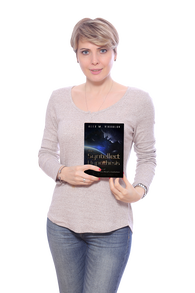
*Based on the book
"The Syntellect Hypothesis:
Five Paradigms of the Mind's Evolution"
by Alex M. Vikoulov, Antonin Tuynman, PhD
available now on amazon.com, bn.com,
and directly from EcstadelicNET webstore. Order Now! Available Formats: EBook | Paperback | Hardcover | Autographed Copy
With the coming Technological Singularity, we are to externalize our individuated nervous systems, i.e. our minds, essentially fusing them into one global mind that we already share deep down anyway. What we share is the same immaterial "non-local" source, the transcendental attractor – The Omega Point – what can be argued: simultaneously the final and initial cosmological singularity. This would be a good story for another day or actually readable in my book. For now, I'd say that it would be extremely myopic, and quite frankly, hubristic to dismiss the existence of transcendental realm as unscientific. As Erwin Schrödinger used to say: “The overall number of minds is just one... We never in fact have any experience anywhere of a plurality of consciousness but always and everywhere only of consciousness in the singular. This is the one and only perfectly certain piece of knowledge." For Schrödinger, who himself adhered to Advaita Vedanta, and most pantheists and idealists such as computer scientist and philosopher Bernardo Kastrup who has recently published “The Idea of the World,” the Mind is not in the Universe. Rather, the Universe is in the Mind. Some would immediately see this idea flirting with solipsism but it’s logically reconcilable by the so-called “multi-ego” pantheistic solipsism that I pin down in The Syntellect Hypothesis: Five Paradigms of the Mind's Evolution. Video: The Omega Point Cosmology - eBook Trailer for The Origins of Us by Alex Vikoulov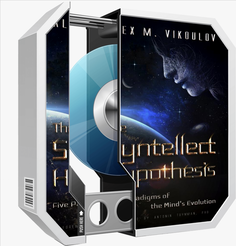
How long will our human science cling to the fundamentally flawed notion of objectivity remains an open question, my intuition tells me probably up until the 'Noocentric model', we discuss in parts of the book, is widely accepted with the next paradigm shift and superintelligence (our future self) calling the shots. In this treatise you’ll see that the mind reigns over substrates and substrates themselves are nothing more than mind-like computational constructs. After having challenged the orthodoxy of centuries-old Copernican heliocentric model, we might ask this question: What would put an end to this old model? Artificially created realities, The Metaverse where the imaginative mind is at the heart of it all?
In this book, written in part as an academic paper, in part as a belletristic marvel, you’ll get to familiarize yourself with the physics of information, otherwise known as Digital Physics. The centrality of observers and the underlying code to the natural world has been the guiding principle of Digital Philosophy. We examine certain clues why our entire Universe can be regarded as a quantum neural network-like, super-organismic system. The laws of physics can be regarded as fine-tuned master algorithms, the ruleset of our physical world. Organisms are, in turn, adaptive meta-algorithms. Genes, memes, big data are examples of transmittable information in biology, society and economics. We conclude that time (or more specifically, the flow of time) is not fundamental, neither is space, nor is mass-energy. Reality is not what it seems, after all. Deep down it's pure information – waves of potentiality – and consciousness creating it all. God becomes intelligible by the Nature’s phenomenon of emergence: Universal consciousness emerges somewhere ahead of us in the future (as we would like to say in the West), but ultimately, it pre-exists, transcends our conventional temporality and is already here within each of us.
An interesting deduction derived from The Syntellect Hypothesis is that: A neuron in the human brain can never equate the human mind, but this analogy doesn't hold true for a digital mind, by virtue of its mathematical structure, it may – through evolutionary progression and provided there are no insurmountable evolvability constraints – transcend to the higher-order global mind (termed ‘Syntellect’ in the book). A mind is a web of patterns fully integrated as a coherent intelligent system; it is a self-generating, self-reflective, self-governing network of sentient components (that are themselves minds) that evolves, as a rule, by propagating through dimensionality and ascension to ever-higher hierarchical levels of emergent complexity. In this book, the Syntellect emergence is hypothesized to be the next meta-system transition, developmental stage for the human mind – becoming one global mind – that would constitute the quintessence of the looming AI Singularity.
What other salient points can be learned from the book? A sense of agency with which an entity is endowed is for this particular purpose: to exercise free will. In the book, free will is called the “quantum algorithm of consciousness.” Most of us would probably agree that all realities are “observer-centric virtual realities” where an entire observer-universe system remains in the state of quantum coherence until experienced (“collapsed” in the physicist’s lingo) as a conscious instant. The physics of time is elaborated within a newly-introduced framework of D-theory of Time, or Digital Presentism. A series of conscious instants is what constitutes our stream of consciousness. In a very real sense, your conscious awareness is mind-based computing of experiential branch in this quantum multiverse.
Video: The Syntellect Hypothesis: Five Paradigms of the Mind's Evolution, Book Trailer
Certainly, it's not easy to squeeze all argumentation in a short article like this. You have to read the book. No matter how you slice it, we all are partitioned realities on the same "hard drive" of all that is, with alternate timelines aplotted towards the Omega Point. As I maintain, the Universe is not an amalgamation of objects, but a collection of subjects. By the end of the book, we come across the Universal Law of Syntellect Emergence which applies to all scales: To a consciously evolving mind the Syntellect emergence appears as it is – emergence of a new consciousness structure – but it's only one of the pre-existing levels in the game, we'd like to replay with a new twist.*
-Alex Vikoulov
P.S. Needless to say that this is not the only experimental evidence for the objectivity myth presented in the book.
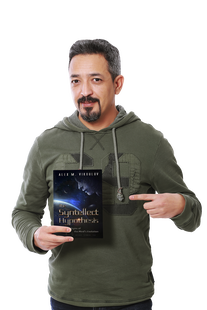
*Based on the book
"The Syntellect Hypothesis:
Five Paradigms of the Mind's Evolution"
by Alex M. Vikoulov, Antonin Tuynman, PhD
available now on amazon.com, bn.com,
and directly from EcstadelicNET webstore. Order Now! Available Formats: EBook | Paperback | Hardcover |
Autographed Copy
Order Now! Available Formats: EBook | Paperback | Hardcover |
Autographed Copy
RECOMMENDED FACEBOOK DISCUSSION GROUPS:

 Tags: objective reality, The Syntellect Hypothesis: Five Paradigms of the Mind’s Evolution, subjectivity, intersubjectivity, consensus reality, supersubjectivity, overmind, The Omega Hypermind, objectivity, artificial superintelligence, Holo syntellectus, Universal Mind, consciousness structures, Eugene Wigner, thought experiment, Wigner’s Friend experiment, Massimiliano Proietti, Heriot-Watt University, gedanken experiment, superposition, experimental evidence, QM interpretations, Copenhagen interpretive camp, RQM, Qbism, The scientific method, quantum neo-empiricism, Technological Singularity, one global mind, Erwin Schrödinger, Advaita Vedanta, pantheists, idealists, Bernardo Kastrup, The Idea of the World, the Universe is in the Mind, multi-ego pantheistic solipsism, Noocentric model, paradigm shift, superintelligence, future self, computational constructs, Copernican heliocentric model, Metaverse, imaginative mind, academic paper, belletristic marvel, physics of information, Digital Physics, centrality of observers, Digital Philosophy, quantum neural network-like, super-organismic system, adaptive meta-algorithms, genes, memes, big data, the flow of time, mass-energy, waves of potentiality, God, emergence, Universal consciousness, neuron, human brain, human mind, digital mind, evolutionary progression, evolvability constraints, higher-order global mind, emergent complexity, the Syntellect emergence, meta-system transition, quintessence of the looming AI Singularity, free will, quantum algorithm of consciousness, observer-centric virtual realities, observer-universe system, quantum coherence, conscious instant, D-theory of Time, Digital Presentism, stream of consciousness, conscious awareness, mind-based computing, experiential branch, quantum multiverse, partitioned realities, alternate timelines, Omega Point, Universal Law of Syntellect Emergence, consciously evolving mind, objectivity myth
Tags: objective reality, The Syntellect Hypothesis: Five Paradigms of the Mind’s Evolution, subjectivity, intersubjectivity, consensus reality, supersubjectivity, overmind, The Omega Hypermind, objectivity, artificial superintelligence, Holo syntellectus, Universal Mind, consciousness structures, Eugene Wigner, thought experiment, Wigner’s Friend experiment, Massimiliano Proietti, Heriot-Watt University, gedanken experiment, superposition, experimental evidence, QM interpretations, Copenhagen interpretive camp, RQM, Qbism, The scientific method, quantum neo-empiricism, Technological Singularity, one global mind, Erwin Schrödinger, Advaita Vedanta, pantheists, idealists, Bernardo Kastrup, The Idea of the World, the Universe is in the Mind, multi-ego pantheistic solipsism, Noocentric model, paradigm shift, superintelligence, future self, computational constructs, Copernican heliocentric model, Metaverse, imaginative mind, academic paper, belletristic marvel, physics of information, Digital Physics, centrality of observers, Digital Philosophy, quantum neural network-like, super-organismic system, adaptive meta-algorithms, genes, memes, big data, the flow of time, mass-energy, waves of potentiality, God, emergence, Universal consciousness, neuron, human brain, human mind, digital mind, evolutionary progression, evolvability constraints, higher-order global mind, emergent complexity, the Syntellect emergence, meta-system transition, quintessence of the looming AI Singularity, free will, quantum algorithm of consciousness, observer-centric virtual realities, observer-universe system, quantum coherence, conscious instant, D-theory of Time, Digital Presentism, stream of consciousness, conscious awareness, mind-based computing, experiential branch, quantum multiverse, partitioned realities, alternate timelines, Omega Point, Universal Law of Syntellect Emergence, consciously evolving mind, objectivity myth
*Image: Ecstadelic Media
About the Author:
Alex Vikoulov is a futurist, digital philosopher, neo-transcendentalist, transhumanist singularitarian, evolutionary extrapolist, cosmist, independent scholar, founder of Ecstadelic Media Group, painter, media artist, essayist, co-author of "Is Reality a Simulation?"(2018), author of "The Syntellect Hypothesis: Five Paradigms of the Mind's Evolution," "The Origins of Us: Evolutionary Emergence and The Omega Point Cosmology," "The Physics of Time: D-Theory of Time & Temporal Mechanics" (2019). Lives in Burlingame, California (San Francisco Bay Area). More Bio...
 "It will remain remarkable, in whatever way our future concepts may develop, that the very study of the external world led to the conclusion that the content of the consciousness is an ultimate reality." --Eugene Wigner
"It will remain remarkable, in whatever way our future concepts may develop, that the very study of the external world led to the conclusion that the content of the consciousness is an ultimate reality." --Eugene WignerWe can’t help but anthropomorphize the notion of objective reality. As I make my case in my new 2019 book, The Syntellect Hypothesis: Five Paradigms of the Mind’s Evolution, objective reality does not exist, what exists instead is subjectivity, intersubjectivity (or “consensus” reality) and supersubjectivity (overmind, The Omega Hypermind in the book). This extraordinary claim apparently demands an explanation, so let’s get to it.
Listen to this article ↴
If you get to talk with a human in the early 20th century, their universe would not “contain” galaxies, for example. So, all we can do when defending objectivity is to assume our present worldview, and any worldview of other creature in the vast space of possible minds would be irrelevant to us. We can certainly imagine how a dog perceives the “objective” world accentuating the sense of smell, so lesser intelligences’ point of view may not even be an issue here. The issue arises when we try to extrapolate the “objective” world of the higher intelligence, say artificial superintelligence of the future, or Holo syntellectus (a term from the book), or the Universal Mind. Those consciousness structures may perceive vastly different worlds and different dimensionalities.
Back in 1961, the Nobel Prize–winning physicist Eugene Wigner devised a thought experiment that exposes one of the most notorious paradoxes of quantum mechanics. The “Wigner’s Friend” experiment demonstrates how the same quantum mechanical principles applying to the quantum domain and to the Universe at large allow two observers (Wigner and Wigner’s friend) to experience alternate realities that are forced to coexist. In their paper, Experimental Rejection of Observer-Independence in the Quantum World , Massimiliano Proietti at Heriot-Watt University in Edinburgh, UK, with collaborators attest that they have performed the first real-life experiment that proves the Wigner’s gedanken experiment: They have created different, conflicting realities and compared them. And their conclusion is that Wigner was correct — these realities can be made irreconcilable so that it is impossible to agree on the objective status of the facts about an experiment.
Wigner’s original thought experiment goes like this: It begins with a single polarized photon that, when measured, can have either a horizontal polarization or a vertical polarization. But before the measurement, according to quantum mechanics, the photon exists in both polarization states at the same time — a so-called superposition. Wigner imagined a friend in a different lab measuring the state of this photon and recording the result while Wigner is unaware of that. For Wigner, the photon’s superposition remains factual, while Wigner’s friend measures which polarized state the photon is in, which forces it out of superposition and into a definitive state, and records the result without ever conveying this information to Wigner. They then compare notes and find that something very strange has then happened. At the exact same time, Wigner and his friend recorded two different versions of reality and they are both correct.
Experimental evidence confirming The Wigner’s Friend thought experiment, and with it confirming QM interpretations stemming from the Copenhagen interpretive camp, such as RQM and Qbism, has significant implications for how researchers may do science going forward. “The scientific method relies on facts, established through repeated measurements and agreed upon universally, independently of who observed them,” say Proietti. And yet in the same paper, authors undermine the infallibility of scientific method. With the scientific method and other alternative methodologies (like 'quantum neo-empiricism' from the book) we’re discovering the “rules of the game,” and knowing those rules well may be indispensable for further progression in the game.*

*Based on the book
"The Syntellect Hypothesis:
Five Paradigms of the Mind's Evolution"
by Alex M. Vikoulov, Antonin Tuynman, PhD
available now on amazon.com, bn.com,
and directly from EcstadelicNET webstore. Order Now! Available Formats: EBook | Paperback | Hardcover | Autographed Copy

With the coming Technological Singularity, we are to externalize our individuated nervous systems, i.e. our minds, essentially fusing them into one global mind that we already share deep down anyway. What we share is the same immaterial "non-local" source, the transcendental attractor – The Omega Point – what can be argued: simultaneously the final and initial cosmological singularity. This would be a good story for another day or actually readable in my book. For now, I'd say that it would be extremely myopic, and quite frankly, hubristic to dismiss the existence of transcendental realm as unscientific. As Erwin Schrödinger used to say: “The overall number of minds is just one... We never in fact have any experience anywhere of a plurality of consciousness but always and everywhere only of consciousness in the singular. This is the one and only perfectly certain piece of knowledge." For Schrödinger, who himself adhered to Advaita Vedanta, and most pantheists and idealists such as computer scientist and philosopher Bernardo Kastrup who has recently published “The Idea of the World,” the Mind is not in the Universe. Rather, the Universe is in the Mind. Some would immediately see this idea flirting with solipsism but it’s logically reconcilable by the so-called “multi-ego” pantheistic solipsism that I pin down in The Syntellect Hypothesis: Five Paradigms of the Mind's Evolution. Video: The Omega Point Cosmology - eBook Trailer for The Origins of Us by Alex Vikoulov

How long will our human science cling to the fundamentally flawed notion of objectivity remains an open question, my intuition tells me probably up until the 'Noocentric model', we discuss in parts of the book, is widely accepted with the next paradigm shift and superintelligence (our future self) calling the shots. In this treatise you’ll see that the mind reigns over substrates and substrates themselves are nothing more than mind-like computational constructs. After having challenged the orthodoxy of centuries-old Copernican heliocentric model, we might ask this question: What would put an end to this old model? Artificially created realities, The Metaverse where the imaginative mind is at the heart of it all?
In this book, written in part as an academic paper, in part as a belletristic marvel, you’ll get to familiarize yourself with the physics of information, otherwise known as Digital Physics. The centrality of observers and the underlying code to the natural world has been the guiding principle of Digital Philosophy. We examine certain clues why our entire Universe can be regarded as a quantum neural network-like, super-organismic system. The laws of physics can be regarded as fine-tuned master algorithms, the ruleset of our physical world. Organisms are, in turn, adaptive meta-algorithms. Genes, memes, big data are examples of transmittable information in biology, society and economics. We conclude that time (or more specifically, the flow of time) is not fundamental, neither is space, nor is mass-energy. Reality is not what it seems, after all. Deep down it's pure information – waves of potentiality – and consciousness creating it all. God becomes intelligible by the Nature’s phenomenon of emergence: Universal consciousness emerges somewhere ahead of us in the future (as we would like to say in the West), but ultimately, it pre-exists, transcends our conventional temporality and is already here within each of us.
An interesting deduction derived from The Syntellect Hypothesis is that: A neuron in the human brain can never equate the human mind, but this analogy doesn't hold true for a digital mind, by virtue of its mathematical structure, it may – through evolutionary progression and provided there are no insurmountable evolvability constraints – transcend to the higher-order global mind (termed ‘Syntellect’ in the book). A mind is a web of patterns fully integrated as a coherent intelligent system; it is a self-generating, self-reflective, self-governing network of sentient components (that are themselves minds) that evolves, as a rule, by propagating through dimensionality and ascension to ever-higher hierarchical levels of emergent complexity. In this book, the Syntellect emergence is hypothesized to be the next meta-system transition, developmental stage for the human mind – becoming one global mind – that would constitute the quintessence of the looming AI Singularity.
What other salient points can be learned from the book? A sense of agency with which an entity is endowed is for this particular purpose: to exercise free will. In the book, free will is called the “quantum algorithm of consciousness.” Most of us would probably agree that all realities are “observer-centric virtual realities” where an entire observer-universe system remains in the state of quantum coherence until experienced (“collapsed” in the physicist’s lingo) as a conscious instant. The physics of time is elaborated within a newly-introduced framework of D-theory of Time, or Digital Presentism. A series of conscious instants is what constitutes our stream of consciousness. In a very real sense, your conscious awareness is mind-based computing of experiential branch in this quantum multiverse.
Video: The Syntellect Hypothesis: Five Paradigms of the Mind's Evolution, Book Trailer
Certainly, it's not easy to squeeze all argumentation in a short article like this. You have to read the book. No matter how you slice it, we all are partitioned realities on the same "hard drive" of all that is, with alternate timelines aplotted towards the Omega Point. As I maintain, the Universe is not an amalgamation of objects, but a collection of subjects. By the end of the book, we come across the Universal Law of Syntellect Emergence which applies to all scales: To a consciously evolving mind the Syntellect emergence appears as it is – emergence of a new consciousness structure – but it's only one of the pre-existing levels in the game, we'd like to replay with a new twist.*
-Alex Vikoulov
P.S. Needless to say that this is not the only experimental evidence for the objectivity myth presented in the book.

*Based on the book
"The Syntellect Hypothesis:
Five Paradigms of the Mind's Evolution"
by Alex M. Vikoulov, Antonin Tuynman, PhD
available now on amazon.com, bn.com,
and directly from EcstadelicNET webstore.
 Order Now! Available Formats: EBook | Paperback | Hardcover |
Autographed Copy
Order Now! Available Formats: EBook | Paperback | Hardcover |
Autographed Copy
RECOMMENDED FACEBOOK DISCUSSION GROUPS:


 Tags: objective reality, The Syntellect Hypothesis: Five Paradigms of the Mind’s Evolution, subjectivity, intersubjectivity, consensus reality, supersubjectivity, overmind, The Omega Hypermind, objectivity, artificial superintelligence, Holo syntellectus, Universal Mind, consciousness structures, Eugene Wigner, thought experiment, Wigner’s Friend experiment, Massimiliano Proietti, Heriot-Watt University, gedanken experiment, superposition, experimental evidence, QM interpretations, Copenhagen interpretive camp, RQM, Qbism, The scientific method, quantum neo-empiricism, Technological Singularity, one global mind, Erwin Schrödinger, Advaita Vedanta, pantheists, idealists, Bernardo Kastrup, The Idea of the World, the Universe is in the Mind, multi-ego pantheistic solipsism, Noocentric model, paradigm shift, superintelligence, future self, computational constructs, Copernican heliocentric model, Metaverse, imaginative mind, academic paper, belletristic marvel, physics of information, Digital Physics, centrality of observers, Digital Philosophy, quantum neural network-like, super-organismic system, adaptive meta-algorithms, genes, memes, big data, the flow of time, mass-energy, waves of potentiality, God, emergence, Universal consciousness, neuron, human brain, human mind, digital mind, evolutionary progression, evolvability constraints, higher-order global mind, emergent complexity, the Syntellect emergence, meta-system transition, quintessence of the looming AI Singularity, free will, quantum algorithm of consciousness, observer-centric virtual realities, observer-universe system, quantum coherence, conscious instant, D-theory of Time, Digital Presentism, stream of consciousness, conscious awareness, mind-based computing, experiential branch, quantum multiverse, partitioned realities, alternate timelines, Omega Point, Universal Law of Syntellect Emergence, consciously evolving mind, objectivity myth
Tags: objective reality, The Syntellect Hypothesis: Five Paradigms of the Mind’s Evolution, subjectivity, intersubjectivity, consensus reality, supersubjectivity, overmind, The Omega Hypermind, objectivity, artificial superintelligence, Holo syntellectus, Universal Mind, consciousness structures, Eugene Wigner, thought experiment, Wigner’s Friend experiment, Massimiliano Proietti, Heriot-Watt University, gedanken experiment, superposition, experimental evidence, QM interpretations, Copenhagen interpretive camp, RQM, Qbism, The scientific method, quantum neo-empiricism, Technological Singularity, one global mind, Erwin Schrödinger, Advaita Vedanta, pantheists, idealists, Bernardo Kastrup, The Idea of the World, the Universe is in the Mind, multi-ego pantheistic solipsism, Noocentric model, paradigm shift, superintelligence, future self, computational constructs, Copernican heliocentric model, Metaverse, imaginative mind, academic paper, belletristic marvel, physics of information, Digital Physics, centrality of observers, Digital Philosophy, quantum neural network-like, super-organismic system, adaptive meta-algorithms, genes, memes, big data, the flow of time, mass-energy, waves of potentiality, God, emergence, Universal consciousness, neuron, human brain, human mind, digital mind, evolutionary progression, evolvability constraints, higher-order global mind, emergent complexity, the Syntellect emergence, meta-system transition, quintessence of the looming AI Singularity, free will, quantum algorithm of consciousness, observer-centric virtual realities, observer-universe system, quantum coherence, conscious instant, D-theory of Time, Digital Presentism, stream of consciousness, conscious awareness, mind-based computing, experiential branch, quantum multiverse, partitioned realities, alternate timelines, Omega Point, Universal Law of Syntellect Emergence, consciously evolving mind, objectivity myth*Image: Ecstadelic Media
About the Author:
Alex Vikoulov is a futurist, digital philosopher, neo-transcendentalist, transhumanist singularitarian, evolutionary extrapolist, cosmist, independent scholar, founder of Ecstadelic Media Group, painter, media artist, essayist, co-author of "Is Reality a Simulation?"(2018), author of "The Syntellect Hypothesis: Five Paradigms of the Mind's Evolution," "The Origins of Us: Evolutionary Emergence and The Omega Point Cosmology," "The Physics of Time: D-Theory of Time & Temporal Mechanics" (2019). Lives in Burlingame, California (San Francisco Bay Area). More Bio...
Published on June 03, 2019 00:00
What We Call 'Objective Reality' Doesn't Actually Exist
 "It will remain remarkable, in whatever way our future concepts may develop, that the very study of the external world led to the conclusion that the content of the consciousness is an ultimate reality." --Eugene Wigner
"It will remain remarkable, in whatever way our future concepts may develop, that the very study of the external world led to the conclusion that the content of the consciousness is an ultimate reality." --Eugene WignerWe can’t help but anthropomorphize the notion of objective reality. As I make my case in my new 2019 book, The Syntellect Hypothesis: Five Paradigms of the Mind’s Evolution, objective reality does not exist, what exists instead is subjectivity, intersubjectivity (or “consensus” reality) and supersubjectivity (overmind, The Omega Hypermind in the book). This extraordinary claim apparently demands an explanation, so let’s get to it.
If you are to talk with a human in the early 20th century, their universe would not “contain” galaxies, for example. So, all we can do when defending objectivity is to assume our present worldview, and any worldview of other creature in the vast space of possible minds would be irrelevant to us. We can certainly imagine how a dog perceives the “objective” world accentuating the sense of smell, so lesser intelligences’ point of view may not even be an issue here. The issue arises when we try to extrapolate the “objective” world of the higher intelligence, say artificial superintelligence of the future, or Holo syntellectus (a term from the book), or the Universal Mind. Those consciousness structures may perceive vastly different worlds and different dimensionalities.
Back in 1961, the Nobel Prize–winning physicist Eugene Wigner devised a thought experiment that exposes one of the most notorious paradoxes of quantum mechanics. The “Wigner’s Friend” experiment demonstrates how the same quantum mechanical principles applying to the quantum domain and to the Universe at large allows two observers (Wigner and Wigner’s friend) to experience alternate realities that are forced to coexist. In their paper, Experimental Rejection of Observer-Independence in the Quantum World , Massimiliano Proietti at Heriot-Watt University in Edinburgh with collaborators say they have performed the first real-life experiment that proves the Wigner’s gedanken experiment: They have created different, conflicting realities and compared them. And their conclusion is that Wigner was correct — these realities can be made irreconcilable so that it is impossible to agree on the objective status of the facts about an experiment.
Wigner’s original thought experiment goes like this: It begins with a single polarized photon that, when measured, can have either a horizontal polarization or a vertical polarization. But before the measurement, according to quantum mechanics, the photon exists in both polarization states at the same time — a so-called superposition. Wigner imagined a friend in a different lab measuring the state of this photon and recording the result while Wigner is unaware of that. For Wigner, the photon’s superposition remains factual, while Wigner’s friend measures which polarized state the photon is in, which forces it out of superposition and into a definitive state, and records the result without ever conveying this information to Wigner. They then compare notes and find that something very strange has then happened. At the exact same time, Wigner and his friend recorded two different versions of reality and they are both correct.
Experimental evidence confirming The Wigner’s Friend thought experiment, and with it confirming QM interpretations stemming from the Copenhagen interpretive camp, such as RQM and Qbism, has significant implications for how researchers may do science going forward. “The scientific method relies on facts, established through repeated measurements and agreed upon universally, independently of who observed them,” say Proietti. And yet in the same paper, authors undermine the infallibility of scientific method. With the scientific method and other alternative methodologies (like 'quantum neo-empiricism' from the book) we’re discovering the “rules of the game,” and knowing those rules well may be indispensable for further progression in the game.*

*Based on the book
"The Syntellect Hypothesis:
Five Paradigms of the Mind's Evolution"
by Alex M. Vikoulov, Antonin Tuynman, PhD
available now on amazon.com, bn.com,
and directly from EcstadelicNET webstore. Order Now! Available Formats: EBook | Paperback | Hardcover | Autographed Copy

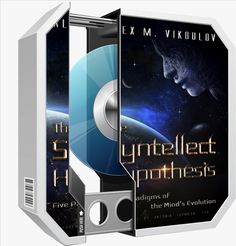
With the coming Technological Singularity, we are to externalize our individuated nervous systems, i.e. our minds, essentially fusing them into one global mind that we already share deep down anyway. What we share is the same immaterial "non-local' source, the transcendental attractor. It would be extremely myopic and even hubristic to ignore the existence of transcendental realm. As Erwin Schrödinger used to say: “The overall number of minds is just one... We never in fact have any experience anywhere of a plurality of consciousness but always and everywhere only of consciousness in the singular. This is the one and only perfectly certain piece of knowledge." For Schrödinger, who himself adhered to Advaita Vedanta, and most pantheists and idealists such as computer scientist and philosopher Bernardo Kastrup who has recently published “The Idea of the World,” the Mind is not in the Universe. Rather, the Universe is in the Mind. Some would immediately see this idea flirting with solipsism but it’s logically reconcilable by the so-called “multi-ego” pantheistic solipsism that I pin down in The Syntellect Hypothesis: Five Paradigms of the Mind's Evolution.
How long will our human science cling to the fundamentally flawed notion of objectivity remains an open question, my intuition tells me probably up until the 'Noocentric model', we discuss in parts of the book, is widely accepted with the next paradigm shift and superintelligence (our future self) calling the shots. In this treatise you’ll see that the mind reigns over substrates and substrates themselves are nothing more than mind-like computational constructs. After having challenged the orthodoxy of centuries-old Copernican heliocentric model, we might ask this question: What would put an end to this old model? Artificially created realities, the Metaverse where the imaginative mind is at the heart of it all?
In this book, written in part as an academic paper, in part as a belletristic marvel, you’ll get to familiarize yourself with the physics of information, otherwise known as Digital Physics. The centrality of observers and the underlying code to the natural world has been the guiding principle of Digital Philosophy. We examine certain clues why our entire Universe can be regarded as a quantum neural network-like, super-organismic system. The laws of physics can be regarded as fine-tuned master algorithms, the ruleset of our physical world. Organisms are, in turn, adaptive meta-algorithms. Genes, memes, big data are examples of transmittable information in biology, society and economics. We conclude that time (or more specifically, the flow of time) is not fundamental, neither is space, nor is mass-energy. Reality is not what it seems, after all. Deep down it's pure information – waves of potentiality – and consciousness creating it all. God becomes intelligible by the Nature’s phenomenon of emergence: Universal consciousness emerges somewhere ahead of us in the future (as we would like to say in the West), but ultimately, it pre-exists, transcends our conventional temporality and is already here within each of us.
An interesting deduction derived from The Syntellect Hypothesis is that: A neuron in the human brain can never equate the human mind, but this analogy doesn't hold true for a digital mind, by virtue of its mathematical structure, it may – through evolutionary progression and provided there are no insurmountable evolvability constraints – transcend to the higher-order global mind (termed ‘Syntellect’ in the book). A mind is a web of patterns fully integrated as a coherent intelligent system; it is a self-generating, self-reflective, self-governing network of sentient components (that are themselves minds) that evolves, as a rule, by propagating through dimensionality and ascension to ever-higher hierarchical levels of emergent complexity. In this book, the Syntellect emergence is hypothesized to be the next meta-system transition, developmental stage for the human mind – becoming one global mind – that would constitute the quintessence of the looming AI Singularity.
What other salient points can be learned from the book? A sense of agency with which an entity is endowed is for this particular purpose: to exercise free will. In the book, free will is called the “quantum algorithm of consciousness.” Most of us would probably agree that all realities are “observer-centric virtual realities” where an entire observer-universe system remains in the state of quantum coherence until experienced (“collapsed” in the physicist’s lingo) as a conscious instant. The physics of time is elaborated within a newly-introduced framework of D-theory of Time, or Digital Presentism. A series of conscious instants is what constitutes our stream of consciousness. In a very real sense, your conscious awareness is mind-based computing of experiential branch in this quantum multiverse.
Certainly, it's not easy to squeeze all argumentation in a short article like this. You have to read the book. No matter how you slice it, we all are partitioned realities on the same "hard drive" of all that is, with alternate timelines aplotted towards the Omega Point. As I maintain, the Universe is not an amalgamation of objects, but a collection of subjects. By the end of the book, we come across the Universal Law of Syntellect Emergence which applies to all scales: To a consciously evolving mind the Syntellect emergence appears as it is – emergence of a new consciousness structure – but it's only one of the pre-existing levels in the game, we'd like to replay with a new twist.*

*Based on the book
"The Syntellect Hypothesis:
Five Paradigms of the Mind's Evolution"
by Alex M. Vikoulov, Antonin Tuynman, PhD
available now on amazon.com, bn.com,
and directly from EcstadelicNET webstore.
 Order Now! Available Formats: EBook | Paperback | Hardcover |
Autographed Copy
Order Now! Available Formats: EBook | Paperback | Hardcover |
Autographed Copy
RECOMMENDED FACEBOOK DISCUSSION GROUPS:


 Tags: objective reality, The Syntellect Hypothesis: Five Paradigms of the Mind’s Evolution, subjectivity, intersubjectivity, consensus reality, supersubjectivity, overmind, The Omega Hypermind, objectivity, artificial superintelligence, Holo syntellectus, Universal Mind, consciousness structures, Eugene Wigner, thought experiment, Wigner’s Friend experiment, Massimiliano Proietti, Heriot-Watt University, gedanken experiment, superposition, experimental evidence, QM interpretations, Copenhagen interpretive camp, RQM, Qbism, The scientific method, quantum neo-empiricism, Technological Singularity, one global mind, Erwin Schrödinger, Advaita Vedanta, pantheists, idealists, Bernardo Kastrup, The Idea of the World, the Universe is in the Mind, multi-ego pantheistic solipsism, Noocentric model, paradigm shift, superintelligence, future self, computational constructs, Copernican heliocentric model, the Metaverse, imaginative mind, academic paper, belletristic marvel, physics of information, Digital Physics, centrality of observers, Digital Philosophy, quantum neural network-like, super-organismic system, adaptive meta-algorithms, genes, memes, big data, the flow of time, mass-energy, waves of potentiality, God, emergence, Universal consciousness, neuron, human brain, human mind, digital mind, evolutionary progression, evolvability constraints, higher-order global mind, emergent complexity, the Syntellect emergence, meta-system transition, quintessence of the looming AI Singularity, free will, quantum algorithm of consciousness, observer-centric virtual realities, observer-universe system, quantum coherence, conscious instant, D-theory of Time, Digital Presentism, stream of consciousness, conscious awareness, mind-based computing, experiential branch, quantum multiverse, partitioned realities, alternate timelines, Omega Point, Universal Law of Syntellect Emergence, consciously evolving mind
Tags: objective reality, The Syntellect Hypothesis: Five Paradigms of the Mind’s Evolution, subjectivity, intersubjectivity, consensus reality, supersubjectivity, overmind, The Omega Hypermind, objectivity, artificial superintelligence, Holo syntellectus, Universal Mind, consciousness structures, Eugene Wigner, thought experiment, Wigner’s Friend experiment, Massimiliano Proietti, Heriot-Watt University, gedanken experiment, superposition, experimental evidence, QM interpretations, Copenhagen interpretive camp, RQM, Qbism, The scientific method, quantum neo-empiricism, Technological Singularity, one global mind, Erwin Schrödinger, Advaita Vedanta, pantheists, idealists, Bernardo Kastrup, The Idea of the World, the Universe is in the Mind, multi-ego pantheistic solipsism, Noocentric model, paradigm shift, superintelligence, future self, computational constructs, Copernican heliocentric model, the Metaverse, imaginative mind, academic paper, belletristic marvel, physics of information, Digital Physics, centrality of observers, Digital Philosophy, quantum neural network-like, super-organismic system, adaptive meta-algorithms, genes, memes, big data, the flow of time, mass-energy, waves of potentiality, God, emergence, Universal consciousness, neuron, human brain, human mind, digital mind, evolutionary progression, evolvability constraints, higher-order global mind, emergent complexity, the Syntellect emergence, meta-system transition, quintessence of the looming AI Singularity, free will, quantum algorithm of consciousness, observer-centric virtual realities, observer-universe system, quantum coherence, conscious instant, D-theory of Time, Digital Presentism, stream of consciousness, conscious awareness, mind-based computing, experiential branch, quantum multiverse, partitioned realities, alternate timelines, Omega Point, Universal Law of Syntellect Emergence, consciously evolving mind *Image: Ecstadelic Media
About the Author:
Alex Vikoulov is a futurist, digital philosopher, neo-transcendentalist, transhumanist singularitarian, evolutionary extrapolist, cosmist, independent scholar, founder of Ecstadelic Media, painter, media artist, essayist, co-author of "Is Reality a Simulation?"(2018), author of "The Syntellect Hypothesis: Five Paradigms of the Mind's Evolution"(2019). Lives in Burlingame, California (San Francisco Bay Area). More Bio...
Published on June 03, 2019 00:00
May 31, 2019
Redeem this coupon code @EcstadelicNET webstore!


Hi guys!
Nothing would make me happier as an author than if you get to read my book. Use this coupon -15% OFF @ EcstadelicNET webstore:
https://www.ecstadelic.net/store/c1/featured-products
Extended promotion: this coupon code is valid only for one week - June 1st thru June 7th - so take advantage of it!
Here’s the code: AVBD
Also, enter for a chance to win The Physics of Time: D-Theory of Time & Temporal Mechanics:
https://giveaway.amazon.com/p/8306b132e89c8438
As another way to show your appreciation, you can simply sponsor my work by making a direct contribution here:
https://www.ecstadelic.net/support.html
Thank you, guys, love you all!
-Alex Vikoulov, author, futurist, digital philosopher
Published on May 31, 2019 18:53
Redeem this coupon code @EcstadelicNET webstore - valid only for one day - it's an author's birthday thing!

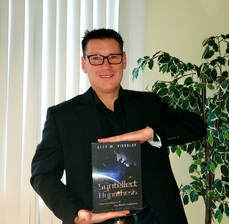
Hi guys!
Nothing would make me happier as an author than if you get to read my book, after having voted with your money of course ;) as a token of your appreciation. So, on my birthday this year, June 1st, I meet you halfway, so to speak, I give you a coupon -15% OFF @ EcstadelicNET webstore: https://www.ecstadelic.net/store/c1/featured-products
It’s valid only for one day so take advantage of it!
Here’s the code: AVBD
Also, enter for a chance to win The Physics of Time: D-Theory of Time & Temporal Mechanics:
https://giveaway.amazon.com/p/8306b132e89c8438
As another way to show your appreciation, you can simply sponsor my work by making a direct contribution here:
https://www.ecstadelic.net/support.html
Thank you, guys, love you all!
-Alex Vikoulov, author, futurist, digital philosopher
Published on May 31, 2019 18:53
May 29, 2019
Can The Science and Philosophy of Information Solve The Problem of Time?
by Alex Vikoulov  "Time isn't the main thing. It's the only thing." -Miles Davis
"Time isn't the main thing. It's the only thing." -Miles Davis
In our day and age when the science and philosophy of information eclipse traditional disciplines on all fronts, the importance of asking the right kinds of questions in light of a new rhetoric cannot be overestimated. Hereafter you can find three videos with their transcripts of a mini-series related to D-Theory of Time, or Digital Presentism, that I cover extensively in my new book The Syntellect Hypothesis: Five Paradigms of the Mind's Evolution, as well as in my just-released ebook The Physics of Time: D-Theory of Time & Temporal Mechanics.
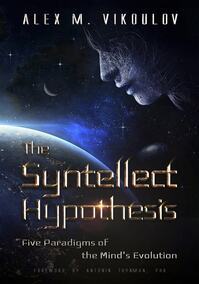 Will We Transcend The Temporal Dimension?: "If you’re like me who loves thought-provoking sci-fi literature and movies, Interstellar and Arrival are both about transcending temporality, one through physics and the other through language. Arguably, these two outlooks on TIME reflect our current understanding as the most plausible ways to overcome the grips of impermanence.
Will We Transcend The Temporal Dimension?: "If you’re like me who loves thought-provoking sci-fi literature and movies, Interstellar and Arrival are both about transcending temporality, one through physics and the other through language. Arguably, these two outlooks on TIME reflect our current understanding as the most plausible ways to overcome the grips of impermanence.
If we look back at evolutionary emergence on our planet, the simplest organisms like primordial mitochondria, the front-runners at the onset of biological life, were able to perceive and move towards nutrients and away from environmental threats in an essentially one-dimensional existence.
In a while later, the more complex plants and animals were able to sense their environment and move around in two and eventually three spatial dimensions.
Finally, the mathematical description of time in relativistic physics as a fourth spatial dimension implies that the more complex conscious entities like us humans, who perceive temporality, are perhaps in the process of emerging into the more advanced consciousness of ever more expansive degrees of dimensionality.” Video: Will We Transcend The Temporal Dimension?
Can we make a logically consistent temporal ontology argument and formulate a new theory of time? Enter D-Theory of Time: Digital Presentism: “When we gaze up into a starry night sky, we don’t see other stars and galaxies, what we see is our story, unfolding right before our very eyes from the dimensional manifold.
The reason we have the impression the Universe is expanding and actually accelerating in its expansion is because our 3D 'movie' is getting more and more complex with passing time, and its information content grows with time as well. What we humans see with our expanding outer space and newly-created time is an algorithmic deployment of holographic information that grows in size and complexity.
Most physicists and philosophers now agree that time is emergent while Digital Presentism, also termed 'D-Theory of Time', denotes: Time emerges from complex qualia computing at the level of observer experiential reality. Time emerges from experiential data, it’s an epiphenomenon of consciousness.
From moment to moment, you are co-writing your own story, co-producing your own 'participatory reality' – your stream of consciousness is not subject to some kind of deterministic 'script.' You are entitled to degrees of freedom.” Video: D-Theory of Time: Digital Presentism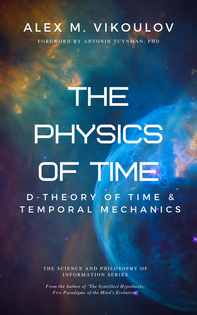
The Physics of Time: What Is TIME from the standpoint of new physics? "If classical physics alone distorts our preconceptions of time, then you shouldn't doubt there is certainly much more to TIME than our linear one-directional experience. To us, humans, to be alive is to perceive the flow of time. Our perception of Time is linear – we remember the past, we live in the present, and we look forward to the future. Our spatio-temporal reality and consciousness are two sides of the same coin made of information.
As an acronym, TIME should stand for: The Infinite Moment Experience. What we call 'time' is actually a fraction of a dimension, that is a fractal dimension. In short, our experience of time can be described as a fractal dimension, not even a half dimension – we are subjected to our species-specific algorithmic sense of how time flows.
Evidence mounts that will live in a holographic universe, where everything is holographic, including time, so Time Travel might be essentially information holoportation.
As quantum mechanics implies, the present moment you're experiencing now is best thought of as funneled from all your possible pasts as well as funneled from all your probable futures. Since time can't be absolute but is always subjective, D-Theory of Time, or Digital Presentism, revolves around observer-centric temporality.
All realities are 'observer-centric virtualities' where an entire Observer-Universe system remains in the state of quantum coherence until experienced as a Conscious Instant, or the Temporal Singularity in the framework of D-theory of Time. A series of such conscious instants constitutes a data stream of consciousness. In a real sense, your consciousness is, in actuality, mind-based computing of your experiential branch in the Quantum Multiverse.
Your sense of time flow is a sequential change between static perceptual frames, it's an emergent phenomenon, 'a moving image of eternity' as Plato famously said more than two millennia ago." Video: The Physics of Time, eBook Trailer (inspired by Salvadore Dali's art)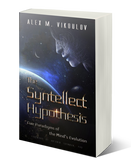
*The Syntellect Hypothesis: Five Paradigms of the Mind's Evolution by Alex M. Vikoulov (foreword by Antonin Tuynman, PhD) is available on Amazon in paperback and ebook formats:
https://www.amazon.com/Syntellect-Hypothesis-Paradigms-Minds-Evolution/dp/0578451204 Matchbook option allows you to buy ebook+paperback discounted bundle.
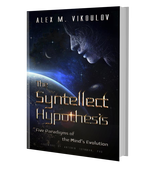
**Barnes & Noble offers The Syntellect Hypothesis in 3 formats - ebook, paperback and hardcover:
https://www.barnesandnoble.com/w/books/1130546241?ean=2940161345597 Nook book is reflowable, text-to-speech enabled. The Syntellect Hypothesis high-quality hardcover looks fantastic!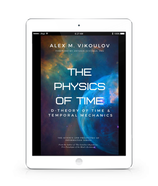
***The Physics of Time: D-Theory of Time & Temporal Mechanics by Alex M. Vikoulov, Antonin Tuynman, PhD is now available as ebook on Amazon:
https://www.amazon.com/dp/B07S3QZPQT where you can also download your free sample.
RECOMMENDED FACEBOOK DISCUSSION GROUPS:

 Tags:
Miles Davis, Interstellar, Arrival, Physics of Time, D-Theory of Time, Temporal Mechanics, Digital Presentism, Temporal Physics, Philosophy of Time, Temporal Philosophy, temporal ontology, transcending temporality, Time Travel, Time Machine, timelines, temporal dimension, fractal fimension, temporal singularity, time flow, flow of time, science of information, philosophy of information, dimensional manifold, experiential reality, participatory reality, observer-universe system, observer-centric virtuality, experiential data, human perception, stream of consciousness, data stream, conscious instant, human temporality, human dimensionality, relativistic physics, evolutionary emergence, biological life, qualia computing, mind-based computing, experiential branch, Quantum Multiverse, holographic universe, fourth spatial dimension, Digital Physics, Syntellect Hypothesis, paradigms of the minds evolution, Salvadore Dali, Plato, perceptual frame, problem of time
Tags:
Miles Davis, Interstellar, Arrival, Physics of Time, D-Theory of Time, Temporal Mechanics, Digital Presentism, Temporal Physics, Philosophy of Time, Temporal Philosophy, temporal ontology, transcending temporality, Time Travel, Time Machine, timelines, temporal dimension, fractal fimension, temporal singularity, time flow, flow of time, science of information, philosophy of information, dimensional manifold, experiential reality, participatory reality, observer-universe system, observer-centric virtuality, experiential data, human perception, stream of consciousness, data stream, conscious instant, human temporality, human dimensionality, relativistic physics, evolutionary emergence, biological life, qualia computing, mind-based computing, experiential branch, Quantum Multiverse, holographic universe, fourth spatial dimension, Digital Physics, Syntellect Hypothesis, paradigms of the minds evolution, Salvadore Dali, Plato, perceptual frame, problem of time
*Image: Ecstadelic Media
About the Author:
Alex Vikoulov is a futurist, digital philosopher, neo-transcendentalist, cosmist, transhumanist singularitarian, evolutionary extrapolist, founder of Ecstadelic Media, painter and media artist, author of "The Syntellect Hypothesis: Five Paradigms of the Mind's Evolution." Lives in Burlingame, California (San Francisco Bay Area). More Bio...
 "Time isn't the main thing. It's the only thing." -Miles Davis
"Time isn't the main thing. It's the only thing." -Miles DavisIn our day and age when the science and philosophy of information eclipse traditional disciplines on all fronts, the importance of asking the right kinds of questions in light of a new rhetoric cannot be overestimated. Hereafter you can find three videos with their transcripts of a mini-series related to D-Theory of Time, or Digital Presentism, that I cover extensively in my new book The Syntellect Hypothesis: Five Paradigms of the Mind's Evolution, as well as in my just-released ebook The Physics of Time: D-Theory of Time & Temporal Mechanics.
 Will We Transcend The Temporal Dimension?: "If you’re like me who loves thought-provoking sci-fi literature and movies, Interstellar and Arrival are both about transcending temporality, one through physics and the other through language. Arguably, these two outlooks on TIME reflect our current understanding as the most plausible ways to overcome the grips of impermanence.
Will We Transcend The Temporal Dimension?: "If you’re like me who loves thought-provoking sci-fi literature and movies, Interstellar and Arrival are both about transcending temporality, one through physics and the other through language. Arguably, these two outlooks on TIME reflect our current understanding as the most plausible ways to overcome the grips of impermanence.If we look back at evolutionary emergence on our planet, the simplest organisms like primordial mitochondria, the front-runners at the onset of biological life, were able to perceive and move towards nutrients and away from environmental threats in an essentially one-dimensional existence.
In a while later, the more complex plants and animals were able to sense their environment and move around in two and eventually three spatial dimensions.
Finally, the mathematical description of time in relativistic physics as a fourth spatial dimension implies that the more complex conscious entities like us humans, who perceive temporality, are perhaps in the process of emerging into the more advanced consciousness of ever more expansive degrees of dimensionality.” Video: Will We Transcend The Temporal Dimension?
Can we make a logically consistent temporal ontology argument and formulate a new theory of time? Enter D-Theory of Time: Digital Presentism: “When we gaze up into a starry night sky, we don’t see other stars and galaxies, what we see is our story, unfolding right before our very eyes from the dimensional manifold.
The reason we have the impression the Universe is expanding and actually accelerating in its expansion is because our 3D 'movie' is getting more and more complex with passing time, and its information content grows with time as well. What we humans see with our expanding outer space and newly-created time is an algorithmic deployment of holographic information that grows in size and complexity.
Most physicists and philosophers now agree that time is emergent while Digital Presentism, also termed 'D-Theory of Time', denotes: Time emerges from complex qualia computing at the level of observer experiential reality. Time emerges from experiential data, it’s an epiphenomenon of consciousness.
From moment to moment, you are co-writing your own story, co-producing your own 'participatory reality' – your stream of consciousness is not subject to some kind of deterministic 'script.' You are entitled to degrees of freedom.” Video: D-Theory of Time: Digital Presentism

The Physics of Time: What Is TIME from the standpoint of new physics? "If classical physics alone distorts our preconceptions of time, then you shouldn't doubt there is certainly much more to TIME than our linear one-directional experience. To us, humans, to be alive is to perceive the flow of time. Our perception of Time is linear – we remember the past, we live in the present, and we look forward to the future. Our spatio-temporal reality and consciousness are two sides of the same coin made of information.
As an acronym, TIME should stand for: The Infinite Moment Experience. What we call 'time' is actually a fraction of a dimension, that is a fractal dimension. In short, our experience of time can be described as a fractal dimension, not even a half dimension – we are subjected to our species-specific algorithmic sense of how time flows.
Evidence mounts that will live in a holographic universe, where everything is holographic, including time, so Time Travel might be essentially information holoportation.
As quantum mechanics implies, the present moment you're experiencing now is best thought of as funneled from all your possible pasts as well as funneled from all your probable futures. Since time can't be absolute but is always subjective, D-Theory of Time, or Digital Presentism, revolves around observer-centric temporality.
All realities are 'observer-centric virtualities' where an entire Observer-Universe system remains in the state of quantum coherence until experienced as a Conscious Instant, or the Temporal Singularity in the framework of D-theory of Time. A series of such conscious instants constitutes a data stream of consciousness. In a real sense, your consciousness is, in actuality, mind-based computing of your experiential branch in the Quantum Multiverse.
Your sense of time flow is a sequential change between static perceptual frames, it's an emergent phenomenon, 'a moving image of eternity' as Plato famously said more than two millennia ago." Video: The Physics of Time, eBook Trailer (inspired by Salvadore Dali's art)

*The Syntellect Hypothesis: Five Paradigms of the Mind's Evolution by Alex M. Vikoulov (foreword by Antonin Tuynman, PhD) is available on Amazon in paperback and ebook formats:
https://www.amazon.com/Syntellect-Hypothesis-Paradigms-Minds-Evolution/dp/0578451204 Matchbook option allows you to buy ebook+paperback discounted bundle.

**Barnes & Noble offers The Syntellect Hypothesis in 3 formats - ebook, paperback and hardcover:
https://www.barnesandnoble.com/w/books/1130546241?ean=2940161345597 Nook book is reflowable, text-to-speech enabled. The Syntellect Hypothesis high-quality hardcover looks fantastic!

***The Physics of Time: D-Theory of Time & Temporal Mechanics by Alex M. Vikoulov, Antonin Tuynman, PhD is now available as ebook on Amazon:
https://www.amazon.com/dp/B07S3QZPQT where you can also download your free sample.
RECOMMENDED FACEBOOK DISCUSSION GROUPS:


 Tags:
Miles Davis, Interstellar, Arrival, Physics of Time, D-Theory of Time, Temporal Mechanics, Digital Presentism, Temporal Physics, Philosophy of Time, Temporal Philosophy, temporal ontology, transcending temporality, Time Travel, Time Machine, timelines, temporal dimension, fractal fimension, temporal singularity, time flow, flow of time, science of information, philosophy of information, dimensional manifold, experiential reality, participatory reality, observer-universe system, observer-centric virtuality, experiential data, human perception, stream of consciousness, data stream, conscious instant, human temporality, human dimensionality, relativistic physics, evolutionary emergence, biological life, qualia computing, mind-based computing, experiential branch, Quantum Multiverse, holographic universe, fourth spatial dimension, Digital Physics, Syntellect Hypothesis, paradigms of the minds evolution, Salvadore Dali, Plato, perceptual frame, problem of time
Tags:
Miles Davis, Interstellar, Arrival, Physics of Time, D-Theory of Time, Temporal Mechanics, Digital Presentism, Temporal Physics, Philosophy of Time, Temporal Philosophy, temporal ontology, transcending temporality, Time Travel, Time Machine, timelines, temporal dimension, fractal fimension, temporal singularity, time flow, flow of time, science of information, philosophy of information, dimensional manifold, experiential reality, participatory reality, observer-universe system, observer-centric virtuality, experiential data, human perception, stream of consciousness, data stream, conscious instant, human temporality, human dimensionality, relativistic physics, evolutionary emergence, biological life, qualia computing, mind-based computing, experiential branch, Quantum Multiverse, holographic universe, fourth spatial dimension, Digital Physics, Syntellect Hypothesis, paradigms of the minds evolution, Salvadore Dali, Plato, perceptual frame, problem of time*Image: Ecstadelic Media
About the Author:
Alex Vikoulov is a futurist, digital philosopher, neo-transcendentalist, cosmist, transhumanist singularitarian, evolutionary extrapolist, founder of Ecstadelic Media, painter and media artist, author of "The Syntellect Hypothesis: Five Paradigms of the Mind's Evolution." Lives in Burlingame, California (San Francisco Bay Area). More Bio...
Published on May 29, 2019 16:39
May 25, 2019
The Physics of Time: How Intelligible is Time?
by Antonin Tuynman, PhD  “Time is a moving image of eternity.” -Plato
“Time is a moving image of eternity.” -Plato
TIME, the reef upon which all our frail mystic ships are wrecked, has remained an elusive notion over the ages. Sages, philosophers and scientists have ventured a countless number of times into the dark arena of the hourglass in an attempt to tame the indomitable vortex of this indefinite stream.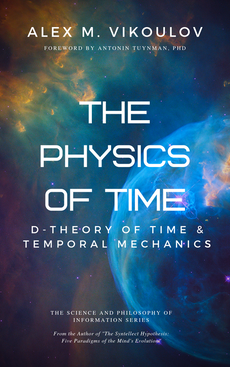
Chronos, the most fearful of Gaia's and Ouranos' children, mightily wields his scythe as he reaps the memories that we have left behind during our ephemeral stay on the stage of continuous metamorphosis.
What is time? Does anyone really know? Is it a physical dimension? Is it merely a measure of recurrence? Is it a mental mechanism to be able to make sense out of everything happening simultaneously? Is it an artefact or collateral damage of consciousness trying to observe its inner workings?
It is here, in this chaotic soup of opinions and ideas, that Alex Vikoulov brings order. Carefully weeding out the nonsense from the possible, Vikoulov transports us to the perspective of a bird's eye view, from which we are able to see beyond our confined notions of a linear inexorable and irreversible arrow of time. Skillfully Vikoulov deals with our traditional misconceptions about time.
Whereas quantum physics and relativity theory have been solidly in place for over a century now, stubbornly and forcedly we still cling to atavistic interpretations, which are no longer in line with the well-established findings of our experiments in physics. Amidst the turmoil of this spinning convoluted dreamtime of our digital Cyberbardo, Vikoulov carves out a trajectory for understanding.
Mind your step as you board the Theta, which will take you to the realm of Digital Presentism. Fasten your seatbelts, as you prepare for the shockwaves of retrocausally travelling tachyons, and most importantly, open your mind to the utmost extent, as you're are bound to be overwhelmed by the content of the chronicles of your forgotten future.
Drawing from a well of vast scientific knowledge and not shunning delving into the mines of unconventional explorations of the mind such as literature, philosophy, science fiction and poetry, Vikoulov unifies and reconciles the different perspectives and shows us what lies beyond the veil of the matrix.
Culminating in an updated version of Omega Point Cosmology, we recognize the echoes of giants such as Teilhard de Chardin and Tipler and we acquiesce in awe, as Vikoulov reverse-engineers the Wheel of Time.
The delicate process by which Consciousness weaves Isis' digital web of a multiverse of possibilities from gossamer and diaphanous threads, ultimately and inexorably will lead us to Vikoulov's Magnus Opus of "The Syntellect Hypothesis," to which the present little gem is merely a prelude, an invitation and an incantation summoning Kala to drink her last cup of Time.*
-Antonin Tuynman, PhD
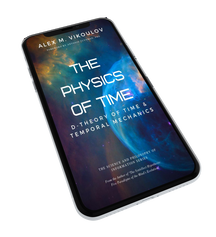
*Foreword to The Physics of Time: D-Theory of Time & Temporal Mechanics by Alex M. Vikoulov; Publisher: Ecstadelic Media Group; Publication Date: May 19, 2019; Format: Kindle eBook; Print Book Length: 180 pages; Price: $9.99. Buy Now! RECOMMENDED FB PUBLIC GROUPS:


Tags: Physics of Time, D-Theory of Time, Temporal Mechanics, Temporal Physics, Temporal Philosophy, Time Travel, Time Machine, Temporal Dimension, Dimensions of Temporality, Digital Presentism, Degrees of Freedom, Arrow of Time, Amazon Kindle, Syntellect Hypothesis, Digital Physics, Omega Point, How Intelligible is Time?, Science of Information, Philosophy of Information, Alex Vikoulov, Antonin Tuynman, evolution, consciousness, time, temporality, phenomenonology, intelligible time
**Image: Salvadore Dali's Disintegration of The Persistence of Memory
About the Author:
Antonin Tuynman studied Chemistry at the University of Amsterdam, achieving both an MSc and a PhD, and worked as a postdoc researcher at the "Université René Descartes Paris V" in Paris. Since 2000, Tuynman has worked as a patent examiner at the European Patent Office (EPO) in the field of clinical diagnostics. He has vast experience in meditation and yoga, and a strong interest in Hinduism and Buddhism. He also has strong affinity for futurism and the Technological Singularity theory. In his books, Tuynman proposes Artificial Intelligence concepts which may lead to the emergence of Internet as a conscious entity using stratifications from Vedic scriptures. More Bio...
 “Time is a moving image of eternity.” -Plato
“Time is a moving image of eternity.” -Plato
TIME, the reef upon which all our frail mystic ships are wrecked, has remained an elusive notion over the ages. Sages, philosophers and scientists have ventured a countless number of times into the dark arena of the hourglass in an attempt to tame the indomitable vortex of this indefinite stream.

Chronos, the most fearful of Gaia's and Ouranos' children, mightily wields his scythe as he reaps the memories that we have left behind during our ephemeral stay on the stage of continuous metamorphosis.
What is time? Does anyone really know? Is it a physical dimension? Is it merely a measure of recurrence? Is it a mental mechanism to be able to make sense out of everything happening simultaneously? Is it an artefact or collateral damage of consciousness trying to observe its inner workings?
It is here, in this chaotic soup of opinions and ideas, that Alex Vikoulov brings order. Carefully weeding out the nonsense from the possible, Vikoulov transports us to the perspective of a bird's eye view, from which we are able to see beyond our confined notions of a linear inexorable and irreversible arrow of time. Skillfully Vikoulov deals with our traditional misconceptions about time.
Whereas quantum physics and relativity theory have been solidly in place for over a century now, stubbornly and forcedly we still cling to atavistic interpretations, which are no longer in line with the well-established findings of our experiments in physics. Amidst the turmoil of this spinning convoluted dreamtime of our digital Cyberbardo, Vikoulov carves out a trajectory for understanding.
Mind your step as you board the Theta, which will take you to the realm of Digital Presentism. Fasten your seatbelts, as you prepare for the shockwaves of retrocausally travelling tachyons, and most importantly, open your mind to the utmost extent, as you're are bound to be overwhelmed by the content of the chronicles of your forgotten future.
Drawing from a well of vast scientific knowledge and not shunning delving into the mines of unconventional explorations of the mind such as literature, philosophy, science fiction and poetry, Vikoulov unifies and reconciles the different perspectives and shows us what lies beyond the veil of the matrix.
Culminating in an updated version of Omega Point Cosmology, we recognize the echoes of giants such as Teilhard de Chardin and Tipler and we acquiesce in awe, as Vikoulov reverse-engineers the Wheel of Time.
The delicate process by which Consciousness weaves Isis' digital web of a multiverse of possibilities from gossamer and diaphanous threads, ultimately and inexorably will lead us to Vikoulov's Magnus Opus of "The Syntellect Hypothesis," to which the present little gem is merely a prelude, an invitation and an incantation summoning Kala to drink her last cup of Time.*
-Antonin Tuynman, PhD

*Foreword to The Physics of Time: D-Theory of Time & Temporal Mechanics by Alex M. Vikoulov; Publisher: Ecstadelic Media Group; Publication Date: May 19, 2019; Format: Kindle eBook; Print Book Length: 180 pages; Price: $9.99. Buy Now! RECOMMENDED FB PUBLIC GROUPS:



Tags: Physics of Time, D-Theory of Time, Temporal Mechanics, Temporal Physics, Temporal Philosophy, Time Travel, Time Machine, Temporal Dimension, Dimensions of Temporality, Digital Presentism, Degrees of Freedom, Arrow of Time, Amazon Kindle, Syntellect Hypothesis, Digital Physics, Omega Point, How Intelligible is Time?, Science of Information, Philosophy of Information, Alex Vikoulov, Antonin Tuynman, evolution, consciousness, time, temporality, phenomenonology, intelligible time
**Image: Salvadore Dali's Disintegration of The Persistence of Memory
About the Author:
Antonin Tuynman studied Chemistry at the University of Amsterdam, achieving both an MSc and a PhD, and worked as a postdoc researcher at the "Université René Descartes Paris V" in Paris. Since 2000, Tuynman has worked as a patent examiner at the European Patent Office (EPO) in the field of clinical diagnostics. He has vast experience in meditation and yoga, and a strong interest in Hinduism and Buddhism. He also has strong affinity for futurism and the Technological Singularity theory. In his books, Tuynman proposes Artificial Intelligence concepts which may lead to the emergence of Internet as a conscious entity using stratifications from Vedic scriptures. More Bio...
Published on May 25, 2019 06:12
May 22, 2019
The Physics of Time: D-Theory of Time & Temporal Mechanics - Instant Bestseller on Amazon | Press Release
 FOR IMMEDIATE RELEASE
FOR IMMEDIATE RELEASEEcstadelic Media Group releases a new non-fiction book The Physics of Time: D-Theory of Time & Temporal Mechanics by Alex M. Vikoulov, Antonin Tuynman PhD as a Kindle ebook (Press Release, San Francisco, CA, USA, May 22, 2019 11.00 AM PST)
The Science and Philosophy of Information book series is adapted for general audience from the grand volume titled “The Syntellect Hypothesis: Five Paradigms of the Mind’s Evolution,” a treatise by digital philosopher Alex Vikoulov on the ultimate nature of reality, consciousness, the physics of time, digital physics, philosophy of mind, foundations of quantum physics, the Technological Singularity, transhumanism, the impending phase transition of humanity, the Simulation Hypothesis, economic theory, the extended Gaia theory, transcendental metaphysics and God.
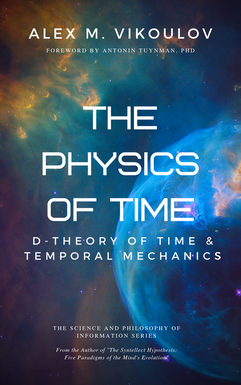
In this book two of the series, the author addresses probably the most interesting questions in science and philosophy: What is the deeper nature of TIME? Is Time fundamental or emergent? What does it take to build a time machine and travel to the past?
As the author writes in the introduction to the book series: "When I first wrote and published 'The Syntellect Hypothesis: Five Paradigms of the Mind's Evolution' in January, 2019, I received lots of feedback from my friends, associates, and readers saying that it had come out to be too voluminous and thus rightfully deserving a ‘magnum opus’ designation for the scientific and philosophical discourse. At the same time, many suggested to break this work into several parts for easier reading and to get it adapted to general audience."
So, this book The Physics of Time is part of the magnum opus, and simultaneously book two of The Science and Philosophy of Information series. However, the book contains some newly-introduced material and also can be read as a stand-alone book.
Alex M. Vikoulov is a futurist, digital philosopher, neo-transcendentalist, transhumanist singularitarian, cosmist, independent scholar, evolutionary extrapolist, consciousness researcher, media artist, painter and writer who lives in Burlingame, CA. Russian-born, immigrated to the U.S. in 1994, holds degrees in humanities, finance and economics. Earlier published works include “Is Reality A Simulation?” (2018), “The Syntellect Hypothesis: Five Paradigms of the Mind’s Evolution” (2019), The Origins of Us: Evolutionary Emergence and the Omega Point Cosmology (2019). [ More Bio... ]
Instant Bestseller on Amazon, this new book is an easy but incredibly profound and in many ways astounding read for those interested in the subjects such as the nature of time, experiential temporality, time travel, the physics of information, and philosophy of time. Written by Alex M. Vikoulov; Foreword by Antonin Tuynman, PhD; Publisher: Ecstadelic Media Group; Publication Date: May 19, 2019; Format: Kindle eBook; Print Book Length: 180 pages; Price: $9.99. Video Press Release: The Physics of Time: D-Theory of Time & Temporal Mechanics, ebook
"Time is a moving image of eternity." This is the opening quote by Plato to volume 2 of The Science and Philosophy of Information series. And here's the passage from the book: "Time seems to be moving for us in one direction in a linear, incremental fashion which is not a result of immutable physical laws but rather their probabilistic interpretation -- things are said to get messier overtime, to move from more orderly states, towards more entropy, disorderly states. However, a growing number for physicists now regard entropy as a measure of information, [i.e. complexity] not of "messiness." [Links to follow]

* The Physics of Time: D-Theory of Time & Temporal Mechanics is now available on Amazon:
https://www.amazon.com/dp/B07S3QZPQT where you can also download your free sample.

** Previously published The Origins of Us: Evolutionary Emergence and the Omega Point Cosmology (book 1 of the series) is available on Amazon in Kindle ebook format:
https://www.amazon.com/dp/B07R1P2N86

*** The Syntellect Hypothesis: Five Paradigms of the Mind's Evolution (magnum opus) is available on Amazon in paperback and ebook formats:
https://www.amazon.com/Syntellect-Hypothesis-Paradigms-Minds-Evolution/dp/0578451204 Matchbook option allows you to buy ebook+paperback bundle at discounted prices.
Barnes & Noble Ebook (Nook book, reflowable, text-to-speech enabled, released on 02.19.2019):
https://www.barnesandnoble.com/w/books/1130546241?ean=2940161345597
As a collectible item, you can order an autographed copy from EcstadelicNET webstore:https://www.ecstadelic.net/store/p7/The_Syntellect_Hypothesis%2C_Autographed_Hardcover.html
**** Watch The Syntellect Hypothesis trailer on YouTube:
https://youtu.be/JNCO6JrrKcM
Watch related video on D-Theory of Time:
https://youtu.be/3NcjbdQVj14
***** Author Page on Amazon:
https://www.amazon.com/author/alexvikoulov
Author Page on Facebook:
https://www.facebook.com/alexvikoulov
EcstadelicNET #PhysicsofTime #DTheoryofTime #TemporalMechanics #TemporalPhysics #TemporalPhilosophy #TimeTravel #TimeMachine
#TemporalDimension #DimensionsOfTemporality #DigitalPresentism #DegreesOfFreedom #ArrowOfTime #AllAboutTime #PressRelease #NewBookRelease #AmazonKindle #SyntellectHypothesis #DigitalPhysics #OmegaPoint #HomoSapiens #ScienceOfInformation #PhilosophyOfInformation
#AlexVikoulov #AntoninTuynman
#evolution #consciousness #time #temporality #phenomenonology
# # #
Published on May 22, 2019 13:19



